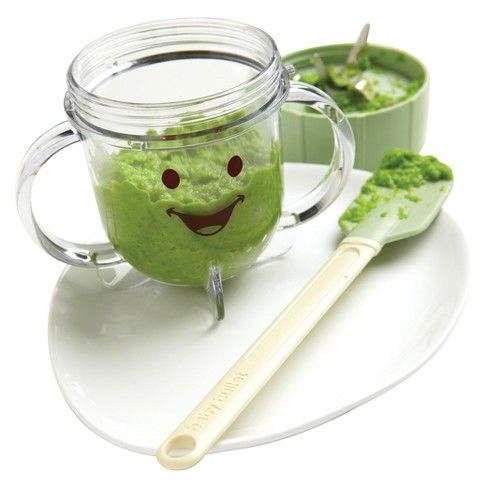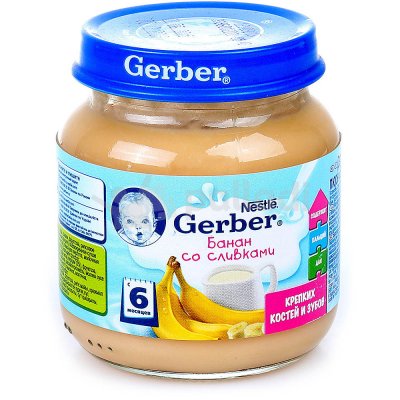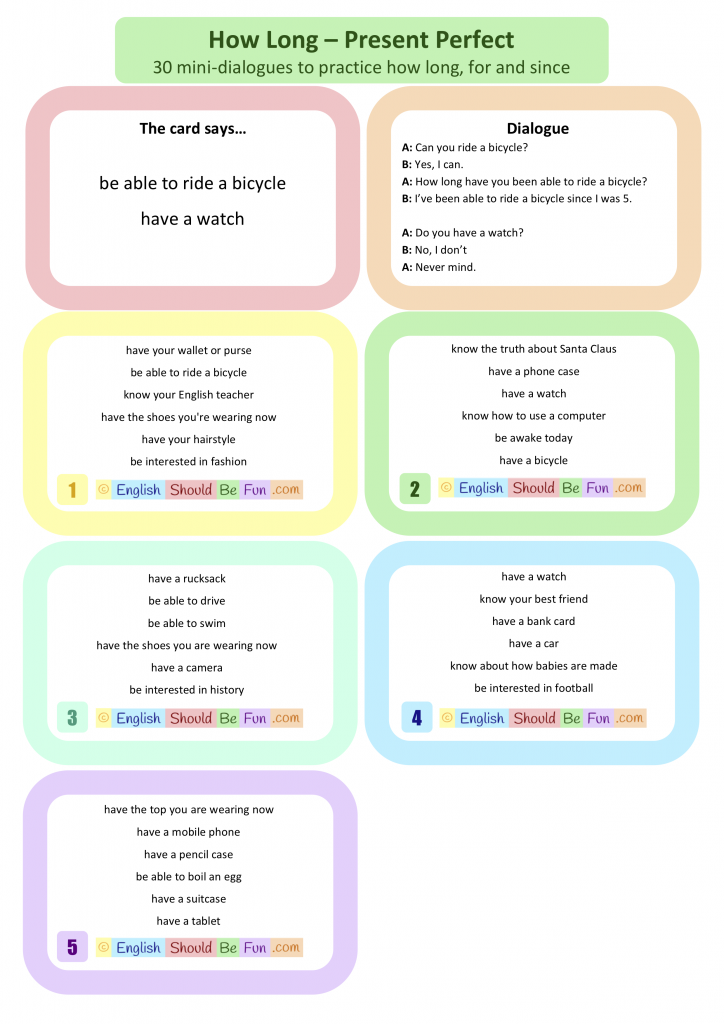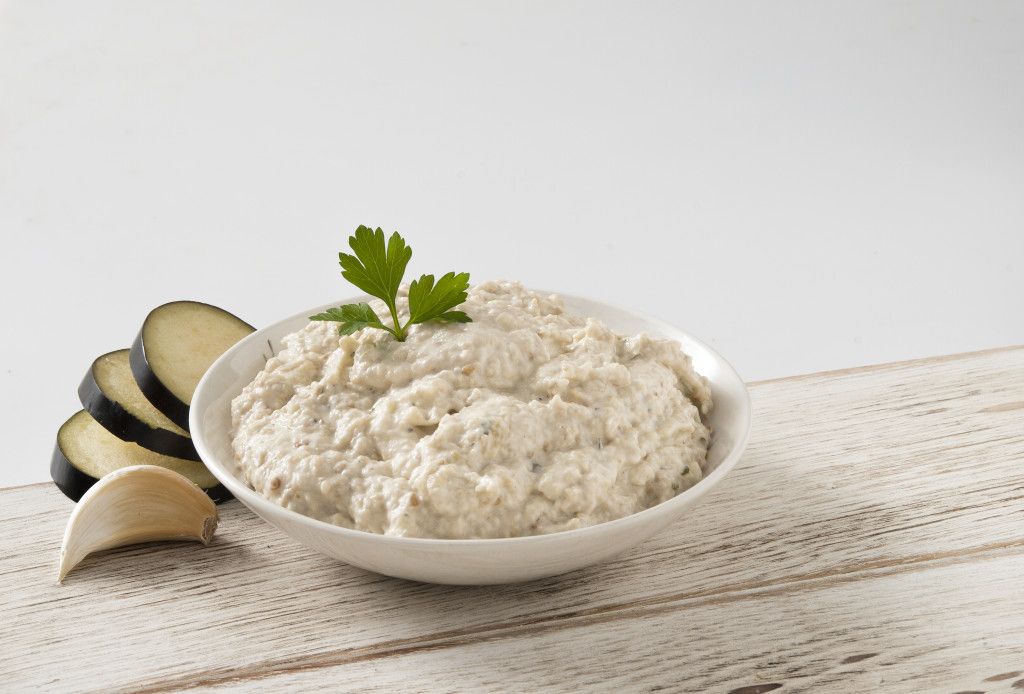Level one baby foods
10 Baby Food Purees (Stage 1)
Everything you need to know about making stage 1 baby food, including 10 recipes for tasty purees that are perfect for introducing solids.
Introducing solids to your baby is such an exciting milestone but it can also be an overwhelming time with lots of questions. When is your baby ready for solids? Which foods should you start with? And how do you make homemade baby food?
I’m here to make sure you have all the information you need! Plus sharing 10 baby food purees to give you some ideas of where to start if you’ve decided to make your own baby food.
When To Start Solids
Most pediatricians recommend babies start solids between 4-6 months, but you know your baby best so trust your gut and do what feels right to you (with guidance from your pediatrician)!
I have a great guide for introducing solids to babies where I outline the basics and share my approach, but just to recap, here are some signs that your baby is ready to start enjoying solid food:
- Baby can hold their head up in an upright position without too much bobbing
- Baby can sit up with (or without) support
- Baby has lost the tongue thrust reflex
- Baby puts their hands or toys in their mouth
- Baby has shown interest in food such as leaning forward and opening their mouth or trying to grab food you’re eating
How to Introduce Solid Food to Baby
Once you’ve decided that your baby is ready to start solids, it’s go-time. There are different approaches to this including baby led weaning, where you skip purees all-together and let your baby feed themselves with finger foods from the start and traditional weaning, which starts with pureed (or blended) foods.
With Olivia I did a hybrid approach where the first few foods we introduced where purees and then we started with a few finger foods when she seemed ready. I go into more detail on this in my introducing solids post.
To be honest, if you’re planning to do baby led weaning this post probably won’t be that helpful because it’s focused on how to make a variety of single ingredient purees.
What is Stage 1 Baby Food?
If you decide to use purees, you’ll quickly notice that baby food is labeled by three stages. Here is a breakdown of what these different stages mean:
- Stage 1 (4-6 months) – single ingredient foods that are pureed into a very thin consistency with no chunkiness whatsoever that can be served with a spoon.

- Stage 2 (around 6-8 months) – slightly thicker consistency and typically includes food combinations and the addition of spices like cinnamon, nutmeg, turmeric, mint, basil, etc. See my stage 2 baby food combos.
- Stage 3 (around 9-12 months) – thick blended foods with chewable chunks or small cut up pieces of easily chewed food.
Best First Foods for Baby
Solid foods can be introduced in any order, but most pediatricians recommend starting with a single-ingredient food that is easy to digest like pureed sweet potato, carrot, banana and/or avocado. Other options include pureed meats, poultry, beans and iron-fortified baby cereals like rice cereal or oatmeal.
You just want to be sure the first few foods are pureed super smooth and almost a liquid consistency. You can easily thin purees with breastmilk or formula.
As baby gets more practice with eating you can reduce the amount of liquid and offer purees with a thicker texture.
Food Allergies and Known Allergens
When introducing foods it can be helpful to introduce only one food every three to five days so you can watch for any signs of allergic reactions. A reaction could show up almost immediately or a few days after so it’s recommend to introduce one food at a time when starting out so you can track what may be causing a reaction in your baby. Reactions include: hives or rashes, itching, shortness or breath or more serious reactions like vomiting or swelling of the lips and tongue.
It’s also helpful to be mindful about common allergens. Foods like diary, eggs, peanuts, tree nuts, wheat, soy and shellfish should be introduced gradually after less allergenic foods have been tolerated. The previous recommendation was to wait on these foods, but that as since changed and in fact, delaying the introduction of these foods may increase the risk of a child developing allergies.
One food that is off limits until a baby is at least 1 year old is honey because of the risk of infantile botulism.
How to Make Homemade Baby Food
We covered when and what foods to start with. Now lets talk how to make a basic baby food puree! Don’t fret, it’s super easy. Here’s the basic process:
- Prep: you’ll want to start by ensuring your fruit or vegetable of choice is thoroughly cleaned. Even if you’re using organic fruits and vegetables, you’ll want to washed and dry your produce! Once the produce is clean, you’re ready to peel and chop into chunks. You can skip this step for some fruits or veggies.
- Cook: some foods like banana and avocado don’t need to be cooked, but many do. For cooking, you can steam, boil or roast. I recommend using a fork to test that they’re tender and soft.
- Blend: place cooked food into a blender or food processor and blend until smooth (or the consistency you desire), adding liquid (breast milk, formula or water) as needed.
That’s it! You’ve just made a homemade baby food puree!
Best Tools For Making Homemade Baby Food
You really don’t need any fancy kitchen appliances, but there are a few tools that will come in handy when making homemade baby food.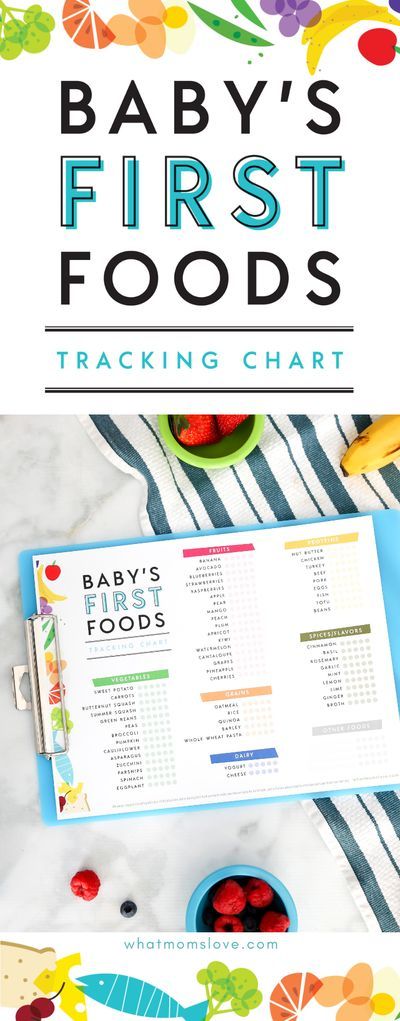
- Steamer basket – Steaming is one the easiest ways to cook foods for making purees and having a steamer basket is key. I have a really basic steamer basket that fits in most pots, but I also use the steamer basket that comes with my Always Pan.
- Blender – I’ve been using my Vitamix blender and love how smooth it makes the purees. You can also use a food processor or an immersion blender.
- Silicone ice cube trays – In the beginning I really liked to make large batches of pureed food and pour it into a silicone ice cube tray with a lid to freeze for later. It was perfect when babies aren’t eating big portions because each cube is about 1-2 ounces.
- Freezer bags – Once you have frozen cubes of puree you can transfer them to a freezer-safe bag. I love reusable Stasher bags for this.
- Storage containers – As soon as you start making homemade baby food you realize that you need lots of little containers.
 A friend loaned me a bunch of plastic storage containers for keeping homemade baby food and I also invested in these glass containers that are freezer safe.
A friend loaned me a bunch of plastic storage containers for keeping homemade baby food and I also invested in these glass containers that are freezer safe. - Permanent markers – When storing and freezing baby food you’ll want to label everything with the name of the food and the date.
- Baby food maker – if you’re looking for an all-in-one solution that steams food and blends it there are some cool gadgets (like the BEABA Babycook) that make homemade baby food a breeze!
10 Stage One Baby Food Purees
Ready to get started making some stage 1 baby food purees? Here are 10 easy recipes to get you started. These are the purees I used in the early days with Olivia. She loved all of these, but there are a ton of other purees you can try including pear puree, apple puree (aka applesauce), bean purees (like chickpea or lentil puree) and even chicken puree.
Sweet Potato
Sweet potatoes are a powerhouse vegetable! They’re packed with fiber, vitamins, minerals and antioxidants and babies love their sweet flavor.
Sweet Potato Puree
3.88 from 8 votes
Sweet potato puree is so easy to make. Just bake your sweet potatoes, peel and blend until smooth! It's a great first food for babies, but can also be used in baking recipes, mixed into oatmeal, added to smoothies or served as a side dish.
Get Recipe
Carrot
Carrots are low on the allergy scale and easily digested by a tiny tummy. They are high in beta-carotene, an antioxidant that converts to vitamin A in the body, which is crucial for eye health and overall immune function.
Carrot Puree
4 from 39 votes
How to make carrot baby food by cooking and blending carrots into a smooth and creamy puree. Carrot puree make a great stage 1 starter food for babies.
Get Recipe
Avocado
Avocados are high in heart-healthy fats as well as fiber, vitamins, minerals and antioxidants! They’re incredibly nutritious and super easy to prepare.
Avocado Puree
5 from 3 votes
Avocado is great first food for babies. It contains healthy fats, it’s easy to blend and it’s delicious. Make it in your food processor or blender or simply mash!
Get Recipe
Banana
A great first food to introduce to babies, bananas are naturally soft and mushy, easy to digest and loaded with vitamins and minerals. The best part? You don’t need to cook them!
Banana Puree
5 from 2 votes
Fresh banana puree is a great first food and baby will love it because it tastes sweet! Easily make it by mashing or blending ripe bananas.
Get Recipe
Peas
Peas are naturally sweet and pack a punch with nutrition, containing a variety of vitamins, minerals and antioxidants. They are also high in protein, with 4 grams per half-cup serving. Fun fact, peas are actually a legume!
Pea Puree
5 from 5 votes
Pea puree is a great first food when introducing solids to babies and all you need is a bag of frozen peas and a blender or food processor!
Get Recipe
Butternut Squash
Technically a fruit, butternut squash is packed with fiber, vitamins and minerals.
Butternut Squash Puree
Make butternut squash puree at home with this simple recipe! Just scoop the seeds, roast, blend and use in recipes that call for butternut squash puree. It's also a great first food for babies!
Get Recipe
Peach
Peaches are naturally sweet and perfect for introducing baby to solid foods. They are rich in many vitamins, minerals and antioxidants.
Peach Puree
5 from 4 votes
Peach puree is so easy to make using fresh peaches! It's a great first food for babies, but can also be used as a topping or mix-in for breakfast, dessert and drink recipes.
Get Recipe
Mango
Rich in vitamins, minerals and antioxidants, mango is especially high in vitamins A and C. They also contain a group of digestive enzymes called amylases which help little tummies just starting with solid foods.
Mango Puree
5 from 3 votes
How to make a delicious mango puree out of fresh (or frozen) mango. It's perfect for serving to baby or to use in recipes.
It's perfect for serving to baby or to use in recipes.
Get Recipe
Blueberry
Small but mighty! Blueberries are known as a superfood. Superfoods are usually plant-based and rich in nutrients that are beneficial to your health such as vitamins, minerals, healthy fats and fiber.
Blueberry Puree
5 from 1 vote
Blueberry puree is full of antioxidants and vitamins and makes for a quick and easy first food for baby! It can also be used as a topping or mix-in for breakfast, dessert and drink recipes.
Get Recipe
Strawberry
Strawberries pack quite a health punch! They are low calorie, taste delicious and are a great source of vitamins, minerals and plant compounds.
Strawberry Puree
5 from 1 vote
Strawberry puree is easy to make and naturally sweet with no added sugar! Use it in baked goods, drinks or as baby food.
Get Recipe
How to Store Purees
Freshly pureed baby food should be stored in the fridge and used within 3-4 days. For longer storage, I recommend freezing purees in an airtight container. I like using silicone ice cube tray or freezer safe jars because they make it easier to thaw smaller amounts for serving to babies.
For longer storage, I recommend freezing purees in an airtight container. I like using silicone ice cube tray or freezer safe jars because they make it easier to thaw smaller amounts for serving to babies.
How to Thaw Frozen Puree
I recommend thawing frozen purees in the fridge the night before you want to use them. In a pinch, you can also thaw it quickly with a warm water bath. It thaws quickly if you’re defrosting a small amount to serve to a baby.
FAQ
Can I store homemade baby food purees?
Yes! Making large batches of purees and storing them in the refrigerator or freezer makes feeding baby homemade purees a breeze.
Can you freeze homemade purees?
Freezing baby food that has been made with frozen fruit or vegetables is fine, as long as you have cooked the frozen foods first. Do not refreeze foods that have thawed without cooking. I recommend labeling baby food with the ingredient and date before you place them in the freezer.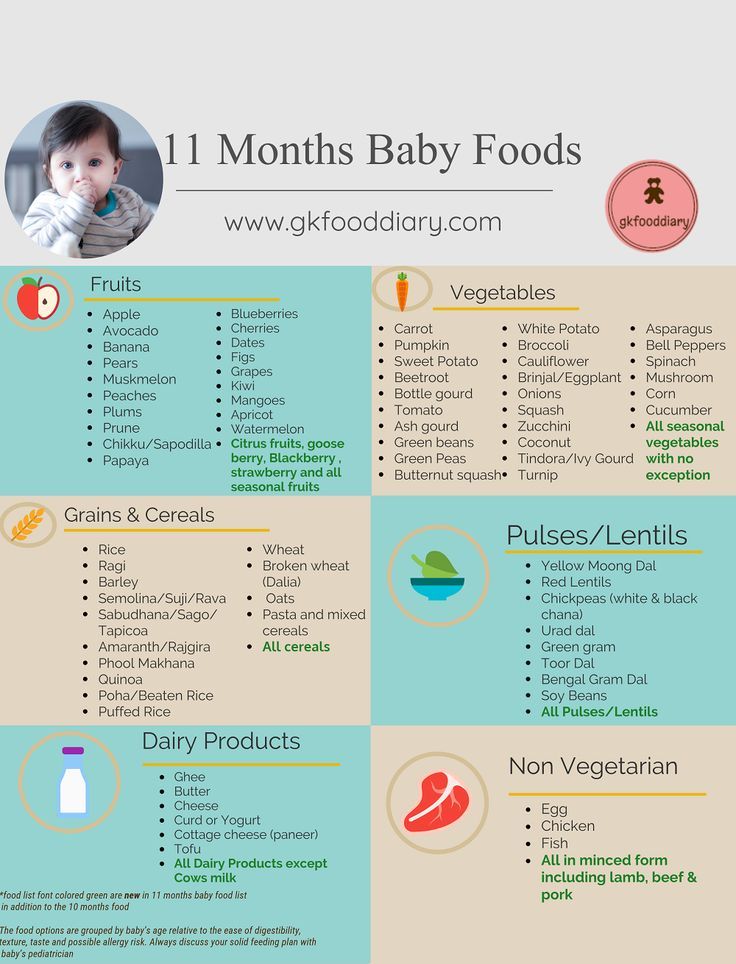
Can you freeze baby food made with breast milk or formula?
If you are freezing baby food that has been mixed with fresh breast milk you’re fine! However, you should not freeze baby food that has been mixed with previously frozen breast milk. Once frozen breast milk has been thawed, it should never be re-frozen.
If you are using formula, it should be okay to freeze baby food that has been mixed with it. Most formula companies don’t recommend freezing formula, but you’re using such a small amount.
You can also freeze the baby food purees without adding any liquid. You can then thaw the baby food puree in the fridge overnight and then thin the food to the desired consistency with breast milk or formula right before serving.
This post about freezing baby food has a ton of great insight and tips.
Should I use organic fruits and vegetables?
I recommend using organic produce when possible, though I realize this isn’t always in the budget.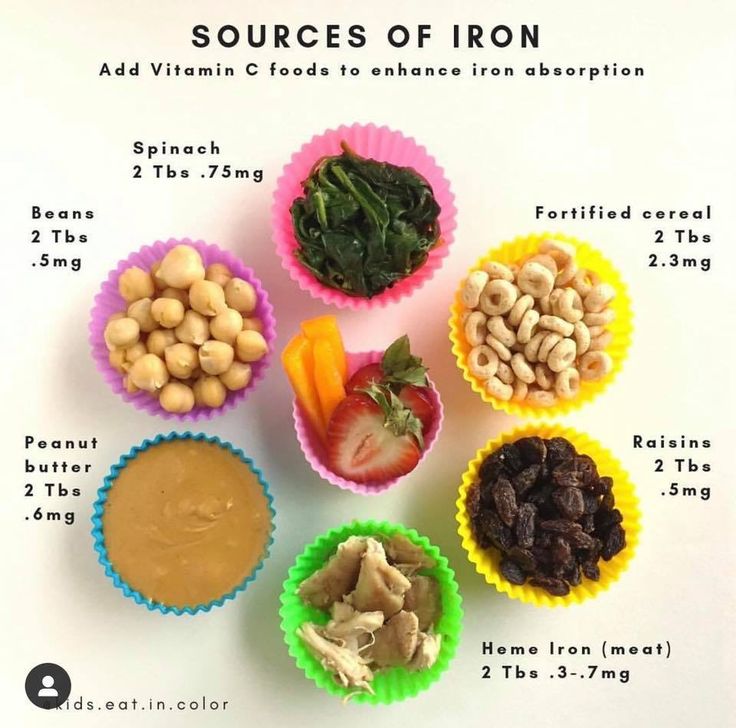 Either way thoroughly rinsing your fruits and vegetables is an important step whether they’re organic or not.
Either way thoroughly rinsing your fruits and vegetables is an important step whether they’re organic or not.
This list of the dirty dozen fruits and vegetables from the EWG is a good guide if you can only budget for some but not all organic produce.
Is it safe to thin baby food with cow’s milk?
From a nutritional point of view, most doctors recommend waiting to introduce babies to cow’s milk until one year of age. If you need to thin your puree you can use breast milk, formula or plain water.
What is the difference between stage 1 and stage 2 baby food?
Stage 1 purees are very thin with no chunkiness and are single ingredients. Stage 2 baby foods can be more elaborate with food combinations as well as chunkier textures.
More Recipes for Resources
- Baby Pancakes
- How to Make Oatmeal For Babies
- Baby (+ Toddler) French Toast
- Applesauce
- Baby Yogurt Melts
- 6 Baby Food Combinations (Stage 2)
Be sure to check out all of the baby food recipes here on EBF.
10 Stage One Baby Food Purees
5 from 5 votes
Everything you need to know about making stage 1 baby food, including 10 recipes for tasty purees that are perfect for introducing solids.
Print Recipe Pin Recipe
Prep Time 10 minutes
Cook Time 20 minutes
Total Time 30 minutes
Servings 6
Sweet Potato
- 2 cups steamed and peeled sweet potatoes
- water, breast milk or formula to thin
Carrot
- 1 lb steamed and peeled carrots
- water, breast milk or formula to thin
Avocado
- 1 avocado
- water, breast milk or formula to thin
Banana
- 1 banana
- water, breast milk or formula to thin
Pea
- 2 cups cooked peas
- water, breast milk or formula to thin
Butternut Squash
- 2 cups steamed and peeled butternut squash
- water, breast milk or formula to thin
Peach
- 3 ripe peaches
- water, breast milk or formula to thin
Mango
- 2 ripe mangoes
- water, breast milk or formula to thin
Blueberry
- 2 cups blueberries
- ½ cup water
Strawberry
- 2 cups strawberries
- water, breast milk or formula to thin
Add veggies or fruit into a high powered blender or a food processor.
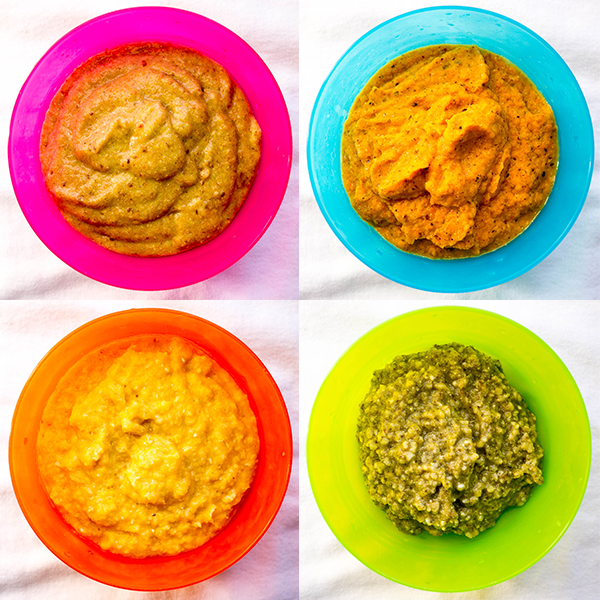 Blend and add liquid until you reach the consistency you desire. You can make the purees smooth and thin for young babies or thicker and chunkier for older babies.
Blend and add liquid until you reach the consistency you desire. You can make the purees smooth and thin for young babies or thicker and chunkier for older babies.
blender
food processor
Serving: 1sweet potato Calories: 75kcal Carbohydrates: 17g Protein: 1g Sodium: 48mg Potassium: 292mg Fiber: 3g Sugar: 4g
DID YOU MAKE THIS RECIPE?
Please leave a comment and star rating on this post and share on social media using the hashtag #eatingbirdfood. I love seeing your recipe shares!15 Stage One Baby Food Purees (4-6 Months)
Home » Feeding Style » Baby Food Purees » Stage One » 15 Stage One Baby Food Purees
These 15 Stage One Baby Food Recipes will tempt your baby’s taste buds! These simple, homemade baby food recipes are made with nutrient-dense fruits and vegetables with an added pinch of spice that makes these purees out-of-this-world delicious! They’re great for babies 4-6+ months of age!
Medically reviewed and co-written by Jamie Johnson, Registered Dietitian Nutritionist (RDN), and Lauren Braaten, Pediatric Occupational Therapist (OT).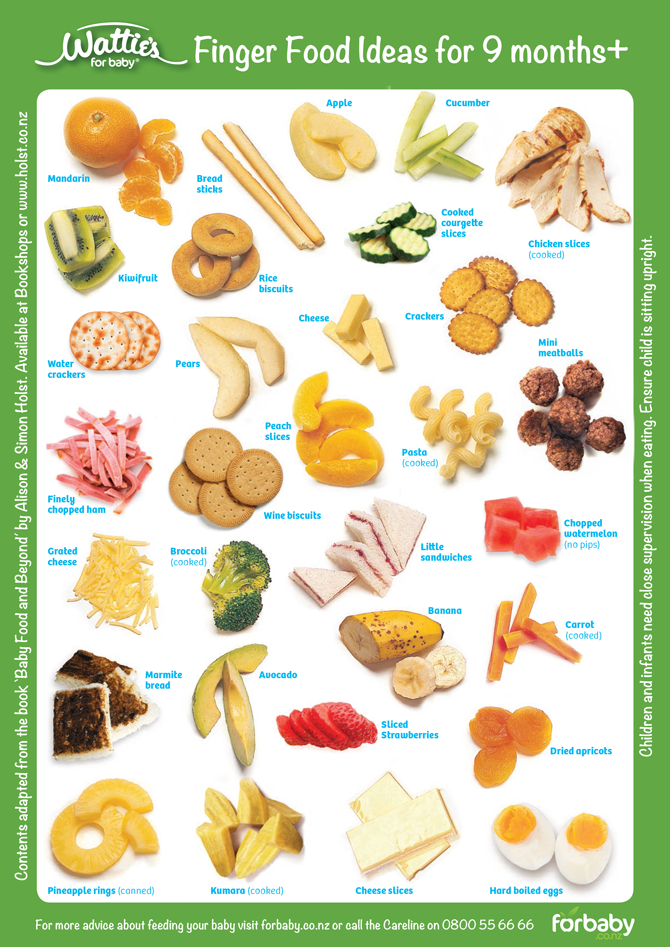
Are you looking to make your baby homemade purees, but don’t know where to start? Does the process intimidate you?
Then you have come to the right place! Here you will find 15 of my all-time favorite starter baby food purees that have been viewed (and made) millions of times by my readers and combined have over 400 5-star reviews!
I would also like to personally welcome you to the wonderful world of baby food, this is a fun (and yummy) club to be in.
Does your baby’s first bite need to be boring?
Of course not!
Baby’s food can (and should be) delicious from the very start!
While it may seem daunting at first, making your own baby food is super easy once you get the hang of it.
And I’m here to walk you through it every step of the way.
First time making homemade baby food? Then I suggest you start this journey by reading my in-depth Guide on How to Make Homemade Baby Food.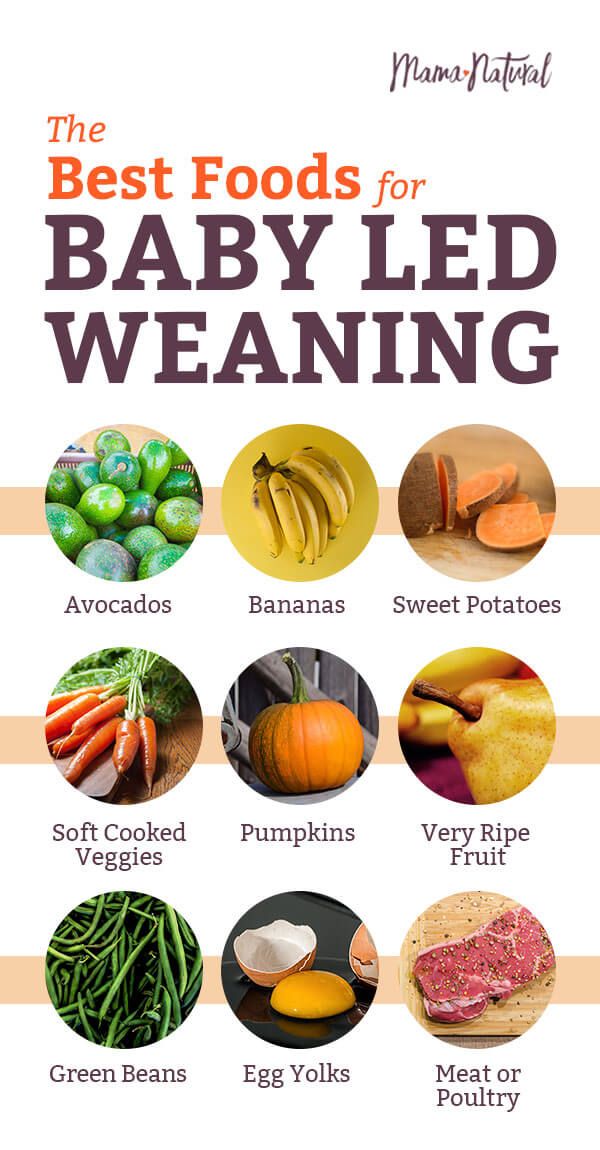 The detailed guide goes over all the important information such as the best cooking tools to have on hand, safe storage, how to know when baby is ready for solids, how to introduce purees, the best first foods for baby, and so much more! You can also check out my best-selling cookbook for even more information and recipes!
The detailed guide goes over all the important information such as the best cooking tools to have on hand, safe storage, how to know when baby is ready for solids, how to introduce purees, the best first foods for baby, and so much more! You can also check out my best-selling cookbook for even more information and recipes!
15 Stage One Baby Puree Video
While the recipes themselves are simple, in this video I will show you how to add in a pinch of cinnamon, rosemary, curry, or mint to quickly roasted or steamed fruits and vegetables that enhance their natural flavors. In other words, these are simple purees that I am pretty sure you will want to eat as well!
What is In Each Puree Recipe
After going through this guide, you will want to check out some (or all!) of the homemade baby food recipes below. Each recipe goes into detail about the:
- produce that is in the puree
- benefits of that produce for your baby
- recipe cooking options
- detailed photos and videos with step-by-step instructions
Reminder: The homemade baby food recipes below are made for babies that want to try the most delicious food from the very first bite! 😋
Helpful ToolsLet’s start with a few of my favorite kitchen essentials to make the best homemade baby food purees! These kitchen tools will help make the process of cooking, blending, and freezing baby food hassle-free.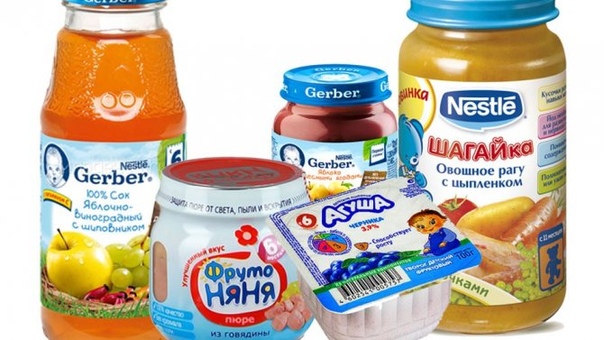 You can find a full list of my favorite baby and toddler food making tools in my online Shop.
You can find a full list of my favorite baby and toddler food making tools in my online Shop.
- Blender or Food Processor
- Freezer Storage Tray
- Fridge Storage Containers
- Stasher Bag
- Baking Sheet
- Steamer Basket
- Medium Saucepan
- Reusable Pouches
- High Chair
- Suction Bowl and Spoon Set
- Bib with Food Catcher
Learning Resources: looking for the best high chair, cups or spoons for your baby? Then we’ve got you covered! Here you will find How to Find the Best High Chair for Baby, an easy guide on Best First Open Cups for Baby (plus 4 tips when introducing a cup) as well as 3 Tips on How To Spoon Feed Baby (plus – our favorite spoons for purees or BLW).
Frequently Asked QuestionsCan babies have spices in their food?
Yes, yes, yes! Babies can absolutely have spices mixed into their purees from the very first bite.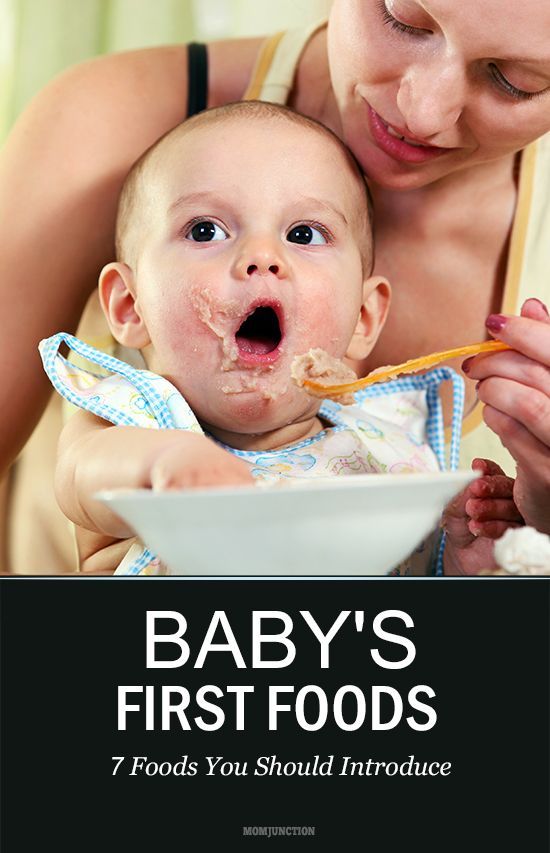 Adding a pinch of spice or herbs to a baby’s food makes it taste better and gives the food additional medicinal properties. Read more here. But as I always say — you do you! If you don’t want to add spices to your baby’s food, you can certainly leave them out. Don’t worry, I give instructions on each recipe card for both.
Adding a pinch of spice or herbs to a baby’s food makes it taste better and gives the food additional medicinal properties. Read more here. But as I always say — you do you! If you don’t want to add spices to your baby’s food, you can certainly leave them out. Don’t worry, I give instructions on each recipe card for both.
What about allergies? Can spices cause an allergic reaction?
My rule of thumb is that unless there is an immediate family member that has a true allergy to a certain spice or food, then introducing your baby to spices at the same time as new food is completely acceptable. Spice and herb allergies in babies and adults are very rare. But remember, it’s always recommended to keep an eye on your baby when introducing any new food or spices.
At what age should I start my baby on baby food purees?
When a baby can start on solid foods is determined by their own rate of development, which generally comes between 4-6 months of age. Some of the developmental milestones babies need to reach to start solids include: if your baby has solid control of their head and neck, if your baby has doubled in weight, and if your baby is reaching for or opening their mouth when you eat (see my guide here). Before you start your baby on purees, you should consult with your pediatrician to make sure your child is developmentally ready for solids.
Some of the developmental milestones babies need to reach to start solids include: if your baby has solid control of their head and neck, if your baby has doubled in weight, and if your baby is reaching for or opening their mouth when you eat (see my guide here). Before you start your baby on purees, you should consult with your pediatrician to make sure your child is developmentally ready for solids.
All of our baby food recipes are designed to enhance the natural taste of the fruits and veggies while keeping as many nutrients intact as possible. In other words, the goal is to make a puree that’s both healthy and delectable.
There are several ways you can cook baby food purees, but the main techniques I use are:
- Steaming
- Roasting
- Simmering
- Raw
Keep in mind, that as long as the produce is cooked until soft, that there isn’t a right or wrong way to cook it for baby food.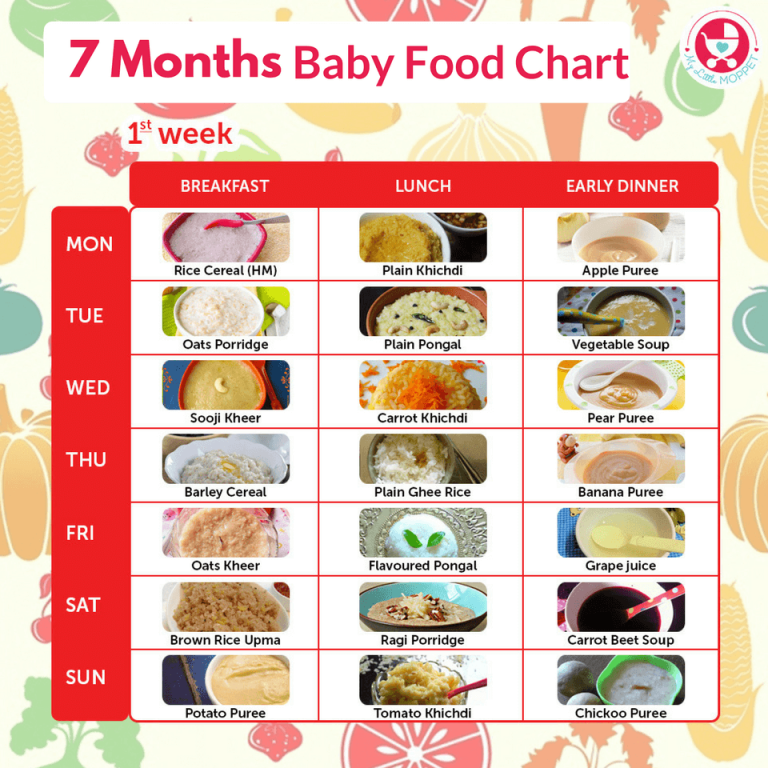
If a recipe for broccoli calls for steaming but you want to roast it because you will already be roasting some broccoli for yourself for dinner, then go ahead and roast the broccoli for your baby’s puree. Play around and have some fun with it!
Adding Spices to Baby PureesIt’s encouraged that you can serve your baby a homemade puree with a pinch of spices or herbs from the very first bite.
Benefits of Spices
- boost and compliment any fruit or vegetable puree
- broaden baby’s emerging palate
- add more flavor and depth into their foods
- decrease picky eating in the years to come
- have medicinal properties in them — they can help with digestive issues, boost brain functions, repair muscle tissues, and so on.
While each puree recipe on this site has a selection of spices or herbs that complement the flavors of the fruit or vegetable in the puree, it’s up to you if you want to add them.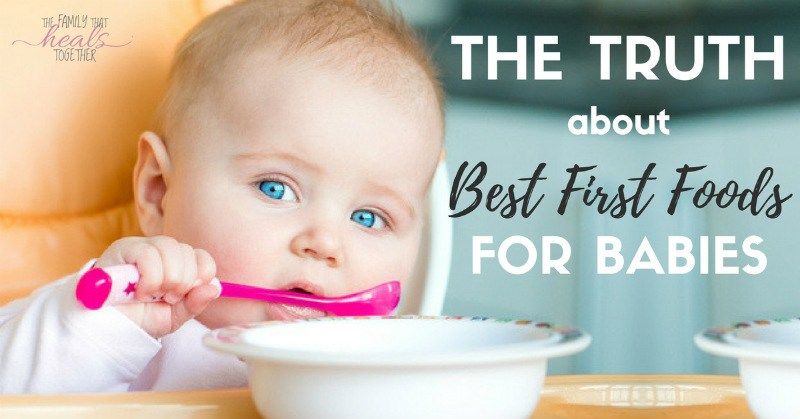 You do you! Either way, the puree recipes on this site will be delicious.
You do you! Either way, the puree recipes on this site will be delicious.
Top Spices to Add to Baby’s Puree
- Cinnamon
- Cloves
- Nutmeg
- Basil
- Mint
- Parsley
- Mild Curry Powder
- Fresh Lemon Juice
- Garlic
- Rosemary
Every recipe below has specific instructions on how to store that particular puree, but these are the general guidelines.
How to Freeze Baby FoodYour freezer is about to become your new best friend, allowing you to keep several weeks’ worth of baby purees at the ready. Whenever you make a puree, put several ounces in the fridge for your little one to enjoy that week, then freeze the rest of the batch for your baby to eat at a later date. Please make sure you get it in the puree into the fridge or freezer within 1 hour of cooking to prevent bacteria growth.
- Make a puree.
- Let it cool slightly.
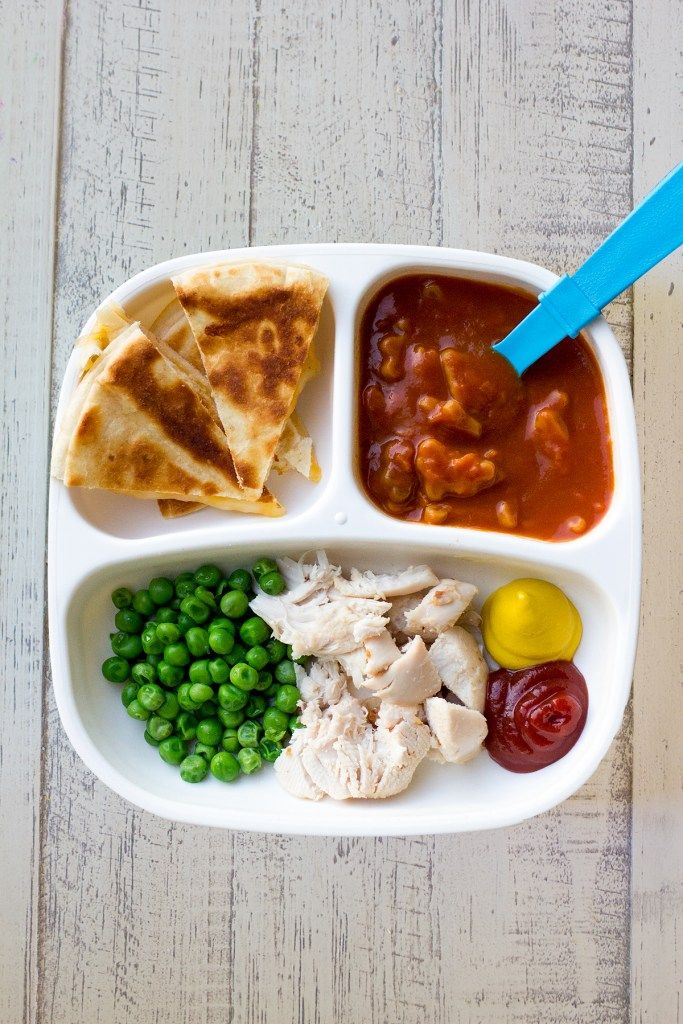
- Transfer the puree to freezer trays or freezer jars.
- Cover the freezer trays with a lid or plastic wrap.
- Label with date and name of puree.
- Place the tray in the freezer.
- Let it freeze for at least 5 hours.
- Take the tray out of the freezer.
- Crack the purees out of the trays.
- Place the frozen purees into zip-lock baggies or stasher bags.
How to Store Baby Food
Purees can be stored for up to four days in an airtight container in the fridge or 4 months in the freezer.
How to Thaw Baby Food
Thawing may seem like a no-brainer, but it never hurts to know your options. There are three different ways to thaw purees.
Microwave- Take the frozen puree cubes that you want to serve out of your freezer.
- Place them in a glass microwave-safe container.
- Microwave in 20-second increments, stirring every time.
- The puree is ready when it is just warm to your touch.
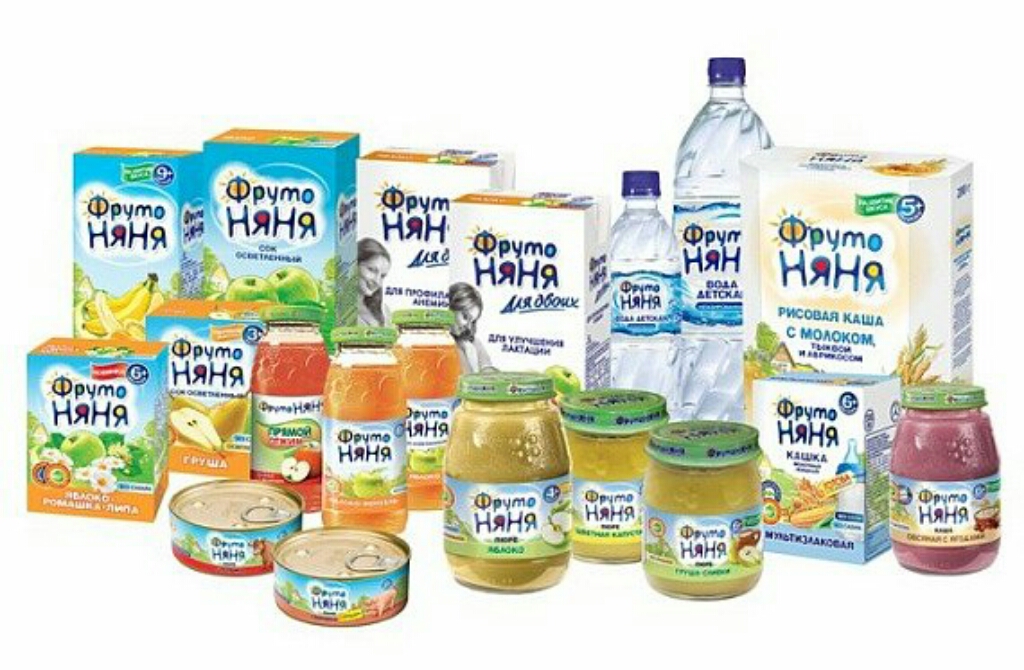
- Grab two clean spoons, one for you and one for your baby, and test your puree before serving.
Heating Tip: To prevent the microwave from unevenly heating the puree, which can leave it with cold and really hot spots and can burn your baby’s mouth, make sure you stir between each interval and taste test it before serving to your baby.
Refrigerator
This one takes the longest time, but it is an excellent alternative to using a microwave.
- Take the frozen puree cubes you want to serve out of your freezer.
- Place the cubes in an air-tight glass container.
- Place the container in the fridge and let the cubes thaw for 8 to 12 hours, usually overnight.
- Do not leave the puree in the container to thaw on the counter or anywhere out of the fridge, as bacteria will start to grow at a rapid rate — which is definitely not recommended.
- Note that the puree will be cold but thawed. So if your baby likes their puree warmed, you’ll have to finish the job using the microwave or stovetop method.

- In a small saucepan, add the frozen puree cubes you want to serve to your baby.
- Over medium-low heat, gently cook the puree until warm, stirring occasionally.
Thawing Tip: Some infants like their puree cold, warm, or really warm, and some will eat it no matter the temperature. You will get to know your baby’s personal preferences as the two of you bond over food.
Feeding Tips
- Make sure baby is showing readiness signs for eating – good control of their head and trunk, sitting with minimal assistance, bringing hands or toys to their mouth, and appearing interested in your food when you’re eating.
- Follow your baby’s lead – when feeding purees from a spoon, sometimes there’s a tendency to keep offering bites past the point of your baby being full. Always follow your baby’s cues for when they are done eating. Turning away from the spoon, closing her mouth, or pushing food away are all signs that your baby is finished with the meal.
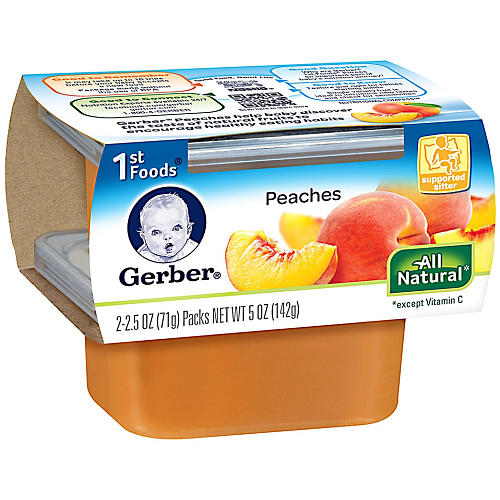
- Throwing spoons – is a common phase that all babies go through at one point or another. One of the best ways to handle spoon throwing is to ignore it and keep feeding your baby as usual (with an extra spoon you already have at the table). If your baby ends up also throwing back up spoons #2 AND #3, simply encourage your baby to eat with their hands until they appear to be finished with the meal.
Top Rated Baby Food Purees
Pea Baby Puree (Stage One)
4.91 stars (84 ratings)
A delicious way to introduce peas to baby. Mild peas paired with a fresh hint of mint – a mouth-watering combo!
Get the recipe
Apples Baby Food Puree
4.76 stars (57 ratings)
This Apple Baby Puree recipe is a wonderful first food for baby! A delicious nutrient-dense puree that baby will go gaga over!
Get the recipe
The Best Sweet Potato Baby Food
5 stars (57 ratings)
This Homemade Sweet Potato with Curry Baby Food Puree is a fun and exotic first puree for baby! Great for 4+ months and is completely freezer-friendly!
Get the recipe
Broccoli Baby Food
4. 81 stars (72 ratings)
81 stars (72 ratings)
This Broccoli Baby Food with olive oil recipe is a great way to introduce healthy green vegetables into your baby's diet. A delicious puree full of essential vitamins and healthy fats for growing baby
Get the recipe
Oatmeal for Babies (Stage One)
5 stars (40 ratings)
This Oatmeal Recipe for Baby is made with simple nutrient-dense ingredients in less than 10 minutes, and it's perfect for baby's first bite or added into their favorite fruit or veggie puree. Great for 4+ months and up.
Get the recipe
Avocado for Baby – Puree & BLW
5 stars (16 ratings)
Avocados are a superfood and great first food for babies 6 months and up. Serve them pureed, smashed, or as a finger food for baby-led weaning.
Get the recipe
WeeSprout Baby Food Freezer Tray
My all-time favorite freezer tray! Individual servings pop out easily.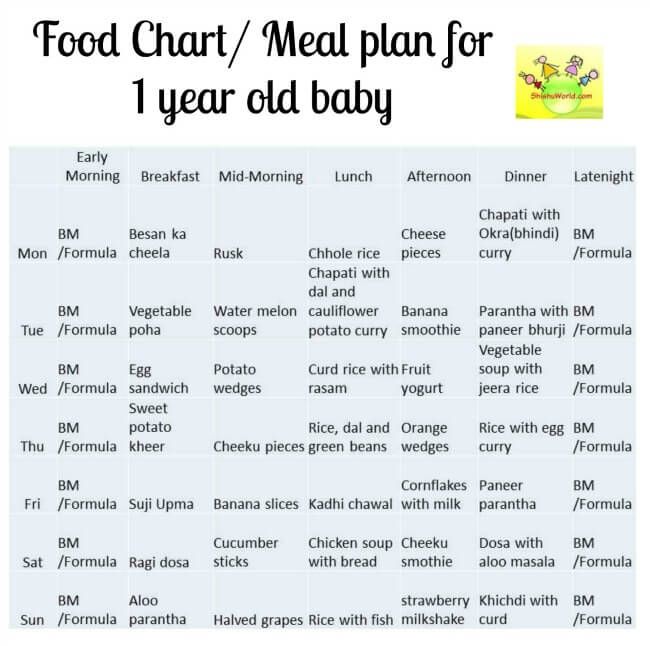 The hard plastic lid snaps on with ease and allows for convenient stacking of freezer trays. Dishwasher safe!
The hard plastic lid snaps on with ease and allows for convenient stacking of freezer trays. Dishwasher safe!
View Product
Butternut Squash Baby Food
5 stars (30 ratings)
This homemade Roasted Butternut Squash Baby Food Puree not only contains calcium, folate, vitamins A and C and fiber but it is also a deliciously smooth way to introduce butternut squash to your baby!
Get the recipe
Green Bean Baby Food
5 stars (35 ratings)
Green beans are steamed until just tender, this puree has a mild taste for baby's palette.
Get the recipe
Creamy Mango-licious Baby Food Puree
4.87 stars (29 ratings)
This 5-minute Mango Baby Food Puree is a great way to introduce baby to the magical taste of one of the world's healthiest fruits – MANGOS!
Get the recipe
Pear Baby Puree (Stage One)
5 stars (19 ratings)
This smooth and creamy homemade Pear Baby Puree is a wonderful first puree for baby – easy on the taste buds and great for their growing bodies!
Get the recipe
Peach Baby Puree (Stage One)
5 stars (16 ratings)
Smooth and creamy, this homemade Peach Baby Puree delivers big on taste with naturally sweetened peaches and flecks of vanilla bean.
Get the recipe
Basic Chicken Baby Food
4.42 stars (198 ratings)
This homemade Basic Chicken Baby Food is a great puree to add to any of your baby’s favorite fruit or veggie purees. Great for extra protein and flavor!
Get the recipe
Homemade Baby Rice Cereal
4.88 stars (49 ratings)
Using only 1-ingredient, this Homemade Baby Rice Cereal is a simple and easy recipe to make baby!
Get the recipe
Red Pepper Baby Puree
4.88 stars (33 ratings)
This Red Pepper Baby Puree recipe is a smooth, creamy and naturally sweet puree that is loaded with vitamin A, B6 and C. Great for 4+ months and older (or stage 1 puree).
Get the recipe
More Baby Fooe Purees
- Strawberry Baby Puree
- Blueberry Baby Puree
- Pumpkin Baby Puree
- Rasberry Baby Food
- Banana Puree
- Homemade Quinoa Baby Cereal
Or watch the shortened video here.
Pea Baby Food Puree
- 2 cups peas, fresh or frozen
- 1 medium zucchini, roughly chopped (optional)
- 4 mint leaves, roughly chopped (optional)
Sweet Potato Baby Food Puree
- 2 large sweet potatoes
- 1/4 tsp mild curry powder (optional)
- 1/4-1 cup liquid, (water, fresh breast milk, formula or sodium-free chicken stock) for pureeing
Roasted Banana Puree
- 4 bananas, cut lengthwise
- 1/8 tsp fresh rosemary, finely chopped (optional)
Carrot Baby Food Puree
- 2 pounds carrots, trimmed, peeled and roughly chopped
- 1/4 tsp nutmeg (optional)
- 1/2-1 cup liquid, (water, reserved water, fresh breast milk, formula or low-sodium stock) for pureeing
Apples Baby Food Puree
- 6 apples, peeled, cored and chopped
- 1/2 cup water
- 1/4 tsp cinnamon (optional)
Broccoli Baby Food Puree
- 2 cups broccoli, chopped into small florets
- 1 small white potato, apple or pear, peeled and roughly chopped, roughly 1/2 cup (optional)
- 1 tbsp good quality olive oil (optional)
Butternut Squash Baby Puree
- 1 butternut squash
- 1 tsp fresh thyme, roughly chopped (optional)
- 1-2 tsp olive oil (optional)
- 1/2-1 cup liquid (water, fresh breast milk, formula, low or no-sodium stock or bone broth), for pureeing
Green Bean Baby Food Puree
- 1 pound green beans, fresh or frozen, trimmed
- 1 big pinch fresh basil, cilantro or parsley, finely chopped (optional)
Creamy Mango-licious Baby Food Puree
- 2 cups fresh or frozen mango, deseed, peeled and roughly chopped.
 If using frozen mangos, thaw first
If using frozen mangos, thaw first - 1 medium banana (optional)
- 1 pinch nutmeg (optional)
Pear Baby Food Puree
- 6 pears, peeled and roughly chopped
- 1/8 tsp cardamom or cinnamon (optional)
- 1/4 cup water
Peach Baby Puree
- 3 fresh peaches or 12oz frozen peaches, do not thaw frozen peaches – use frozen
- 1/4 cup water
- 1/2 tsp vanilla bean pod (optional)
- 1 pinch pinch nutmeg (optional)
Basic Chicken Baby Puree
- 1 8-ounce boneless skinless chicken breast or thighs, cubed
- 1 cups chicken or veggie stock, low-sodium or sodium-free
- 1 tsp dried parsley (optional)
Homemade Baby Rice Cereal
- 1 cup brown rice, I prefer organic short grain
- 2 cups water for cooking
- 1-2 cups of liquid for blending, (water, fresh breastmilk or formula)
Red Pepper Baby Puree
- 2 red bell peppers, deseeded and roughly chopped
- 1/2 cup white potato, apple or pear, peeled and roughly chopped
Oatmeal for Babies
- 2 cup water
- 1 cup old fashioned oats
- 1/2 tsp chia seeds (optional)
- 1/2 tsp hemp seeds (optional)
Avocado for Baby
- 1/4 avocado
- 1 tsp breast milk, formula or water
Pea Baby Food Puree
In a medium saucepan, bring 2″ of water to a boil over medium heat.
 Place the zucchini in a steamer basket, and place over boiling water. Cover and steam for 5 minutes.
Place the zucchini in a steamer basket, and place over boiling water. Cover and steam for 5 minutes.Add in the peas, and steam for an additional 3-5 minutes. Reserve steamer water. Let cool slightly.
Add the zucchini, peas and mint leaves to a blender or food processor and puree for 1 minute or until you have achieved the desired texture. If the puree is too thick, add in 1/4 cup of the reserved steamer water until you have the right consistency.
Note on Zucchini: while this is a 2 vegetable starter puree, zucchini allergies are very low, so I added it to this recipe to give the peas a mild taste and smoother texture. You can completely leave them out if you prefer. Just steam the peas as directed.
Sweet Potato Baby Food Puree
Heat oven to 400°. Line baking sheet with tin foil, parchment paper or a silicone mat.
Wash and dry the sweet potatoes.
 Prick with a fork in several places and then place the sweet potatoes on the baking sheet. Bake for 45 minutes – 1 hour or until a fork can easily prick the sweet potato. Let sit until cool to touch.
Prick with a fork in several places and then place the sweet potatoes on the baking sheet. Bake for 45 minutes – 1 hour or until a fork can easily prick the sweet potato. Let sit until cool to touch.Make a cut into the skin of the potato lengthwise and peel away the skin of the potato. Scoop out the sweet potato meat and place into a blender or food processor, adding in the mild curry powder and water.
Puree on high for 1-2 minutes or until smooth, adding in additional liquid in 1/4 cup increments if needed. I had to add in 1 cup of water to the puree pictured. Serve or freeze for a later meal.
Additional Spices: Feel free to use the following spices instead of the curry – 1/2 tsp of cumin, 1/4 tsp of nutmeg, 1/2 tsp of cloves, 1 fresh garlic clove, 1/2 tsp of chopped fresh thyme, 3-4 basil leaves, 1/2 tsp chopped rosemary or even a big pinch of fresh ginger or 1/2 tsp ginger powder.
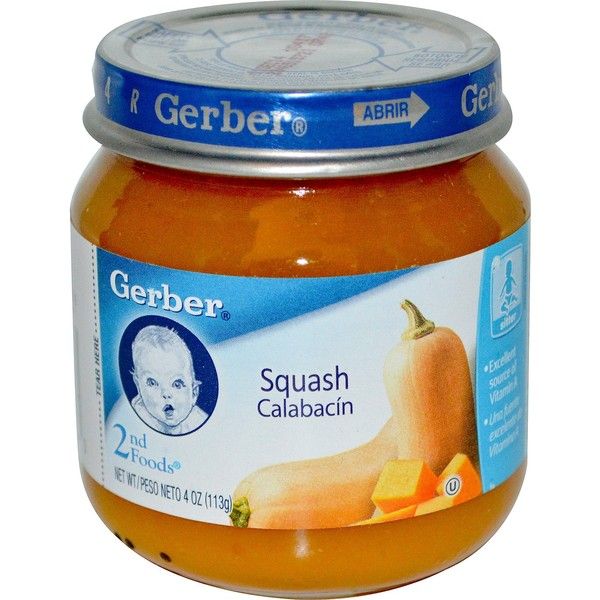 Or you can leave out the spices altogether.
Or you can leave out the spices altogether.
Roasted Banana Baby Puree
Heat oven to 325 degrees F. Line baking sheet with parchment paper.
Place bananas on a baking sheet and roast for 10-12 minutes or until golden brown. Let cool slightly.
Place bananas and rosemary into a blender or food processor and puree for 1-2 minutes or until completely smooth. You may need to add additional water, so start by adding in 1/4 cup increments until you get the desired consistency.
Additional Spices: This recipe is also great with 1 tsp cinnamon, 1/2 tsp cloves, 1/2 tsp nutmeg, or for a fun twist, 1/2 tsp mild curry.
Note on Bananas: while any ripeness of bananas will work, I have found that the bananas that are ripe to very ripe tend to work best in this recipe.
Carrot Baby Food Puree
In a medium saucepan, bring 2″ of water to a boil over medium heat.
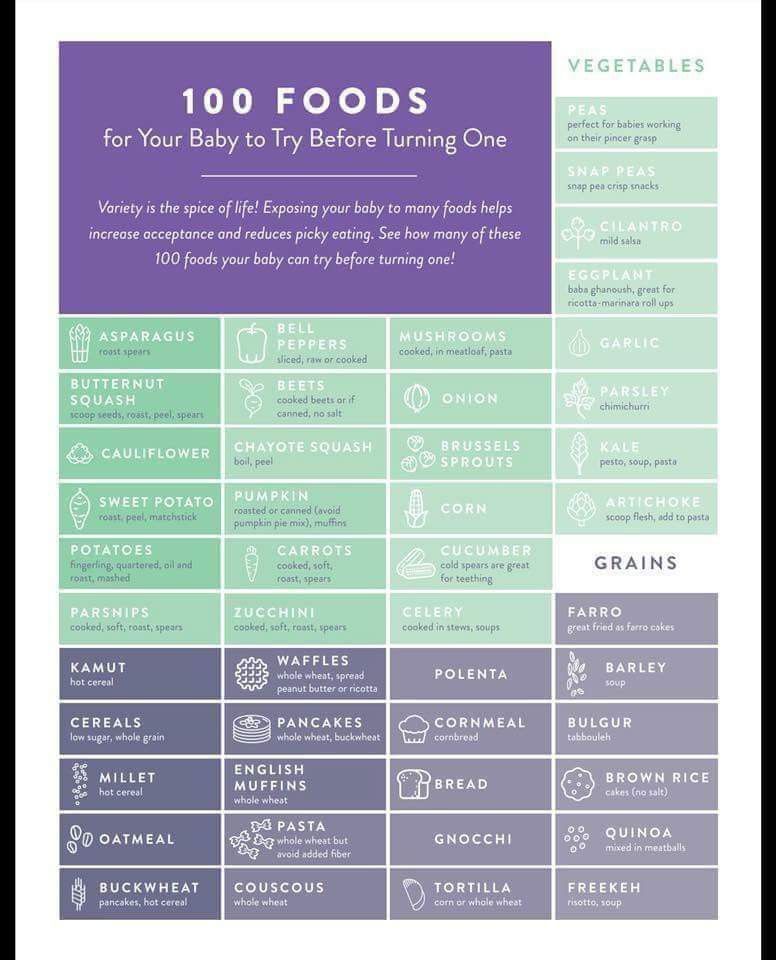
Place the carrots into a steamer basket, cover and cook for 9-11 minutes or until tender. Reserve steamer water. Let cool slightly.
Place the carrots, nutmeg and 1/2 cup of liquid into a blender or food processor and puree for 1-2 minutes on high, adding 1/4 cup liquid at a time until you achieve the desired consistency. Serve and enjoy, or freeze for later.
Notes on Nutmeg: adding in spices to babies first purees are completely optional, but totally safe. Nutmeg rounds out the acidic taste carrots sometimes have and make this puree taste grounded and full-bodied.
Additional Spices: Feel free to substitute 1/2 tsp ginger powder or 1/4 fresh ginger, 1/2 tsp mild curry powder, 1/4 tsp cloves, 1/2 tsp finely minced fresh chives or 1/2 garlic clove instead of the nutmeg.
Apples Baby Food Puree
In a medium saucepan, place the apples, water and cinnamon.
 Cover and heat on medium-low for 15-20 minutes or until apples are tender. Let cool slightly.
Cover and heat on medium-low for 15-20 minutes or until apples are tender. Let cool slightly.Transfer all of the ingredients into a blender or food processor and blend for 1-2 minutes or until completely smooth. For a chunky puree, quickly pulse the ingredients 10-15 times or until you receive your desired consistency. Serve or freeze for later.
Additional Spices: Feel free to sub in these spices instead of the cinnamon for this recipe – 1/8 tsp of cloves, 1/8 tsp of nutmeg, 1-2 leaves of fresh mint, 1-2 leaves of fresh basil, a pinch of fresh or 1/4 tsp of ginger powder or even 1/4 of coriander for a fun twist.
Apples: you can use any sweet apple in this recipe – Gala, Honeycrisp, Fuji, McIntosh, etc.
Broccoli Baby Food Puree
In a medium saucepan, bring 2 inches of water to a boil over medium heat. Place the broccoli and potato (or apple/pear) into a steamer basket and place over boiling water, cover and steam for 10-12 minutes or until the broccoli and potato are tender.
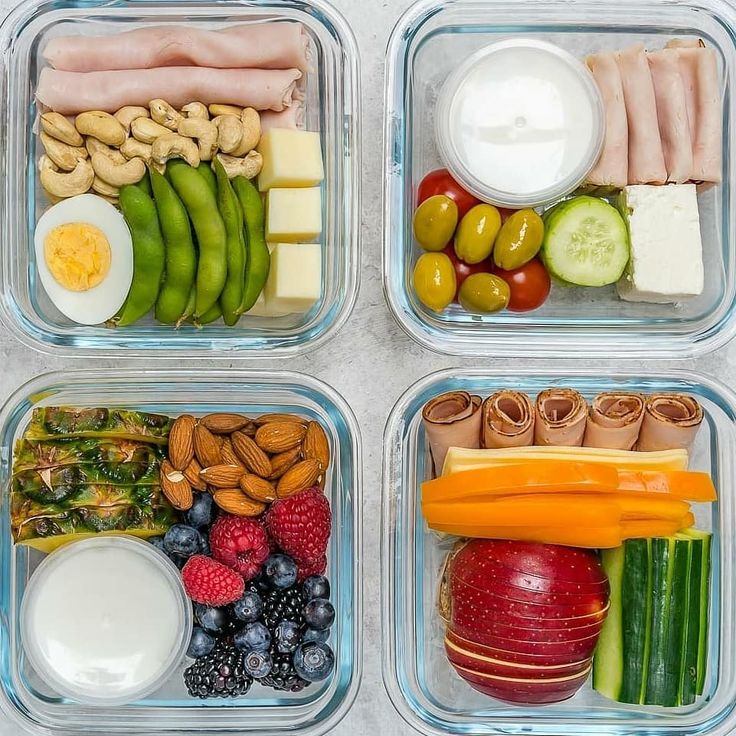 Reserve water from the steamer. Let cool slightly.
Reserve water from the steamer. Let cool slightly.Add the broccoli, potato and olive oil into a blender or food processor and puree until smooth, adding the reserved water from the steamer basket in 1/4 cup increments if needed.
Adding In Spices: Feel free to add in 1 tsp of chopped chives, 2-3 mint leaves, 1 tsp of chopped cilantro, 1/2 tsp cumin or a squeeze of fresh lemon juice.
Butternut Squash Baby Puree
Heat oven to 450 degrees F. Line baking sheet with a silicone mat, tin foil or parchment paper.
Cut butternut squash in half, deseed and place flesh side up, skin side down. Optional – Feel free to drizzle the squash with 1-2 teaspoons of olive oil for some added healthy fat.
Bake for 45 minutes or until you can easily prick the squash with a fork. Let cool until you can handle the squash with your hands.
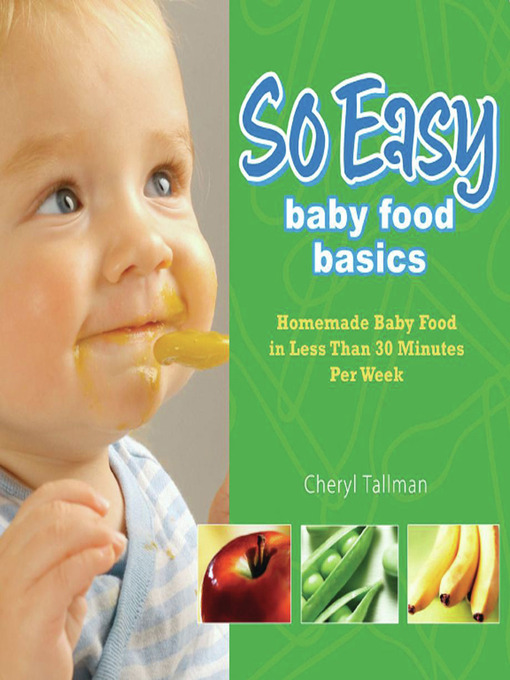
Scrape off the skin and discard. Place the butternut squash into a blender or food processor. Add thyme and puree for 1-2 minutes, adding water in 1/4 cup increments until you have your desired consistency. I had to add 3/4 cup of water to my puree shown below.
Additional Spices: Feel free to sub the thyme for 4 basil leaves, 1 tsp chopped rosemary, 1 tsp ginger powder, or 1 big pinch of fresh ginger, 1/2 teaspoon nutmeg, or even 1/2 tsp of coriander.
Green Bean Baby Food Puree
Fill a medium saucepan with 2” of water and bring to boil over medium heat. Place the green beans (fresh or frozen) into a steamer basket over the boiling water, cover, and cook for 10 minutes or until tender. Let cool slightly. Reserve steamer water.
Transfer the green beans and herb to a blender or food processor and puree for 1-2 minutes or until smooth, adding reserved steamer water in 1/4 cup increments if needed until you reach your desired consistency.

Adding Spices: you can add a big pinch of roughly chopped basil, cilantro, mint, parsley, or chives to this puree before blending.
Creamy Mango-licious Baby Food Puree
Place the mango, banana and nutmeg (if using) into a blender or food processor. Puree for 1 minute or until completely smooth. If your mango is not ripe enough, you might need to add in up to 1/4 cup of water while blending to get the right consistency. Serve or freeze for later.
Mango Tip: I usually find that organic frozen mangos are easier and cheaper to find than fresh organic mangos, but if mangos are in season when you are making this recipe, by all means, you can use fresh over frozen. For fresh mangos, simply peel and chop.
Pear Baby Food Puree
In a medium saucepan, place the pears, cardamon and water, cover and heat on medium-low heat for 10-15 minutes, or until tender.
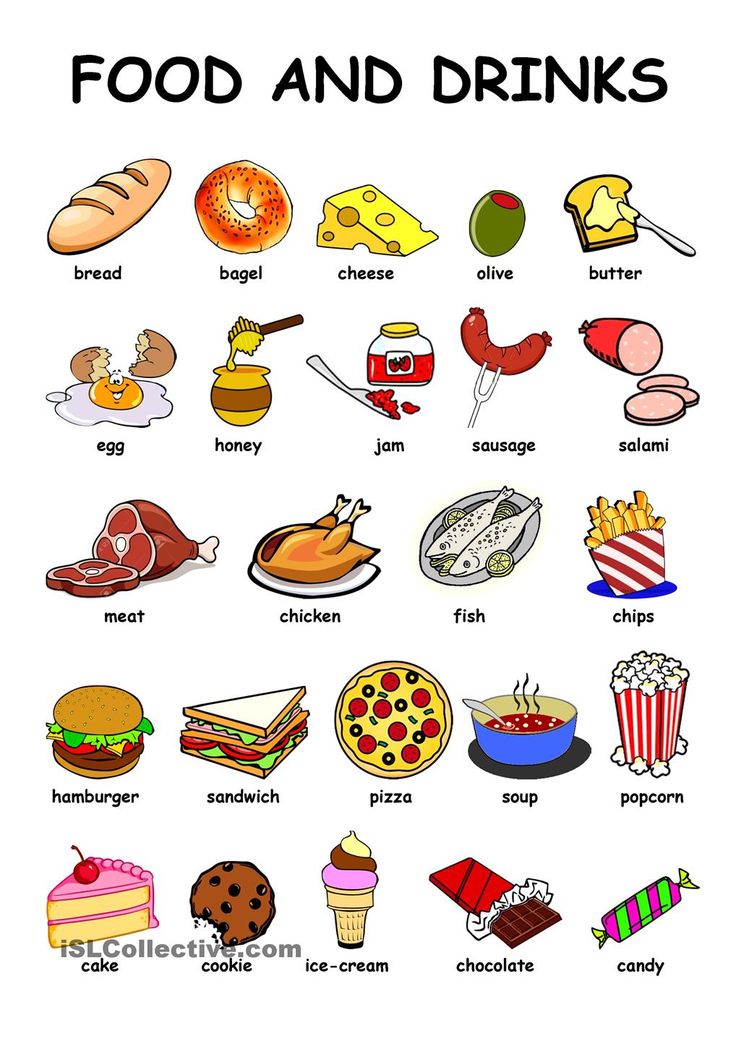 Let cool slightly.
Let cool slightly.Using a slotted spoon, scoop the pears out of the saucepan, leaving water behind, and into a blender or food processor. Blend for 1-2 minutes until you have your desired consistency. If your pear puree is too thick, add the leftover cooking water in 1/4 cup increments.
Peach Baby Puree
If using fresh peaches, peel, pit and slice the peaches. If using the fresh vanilla bean pod, cut in half and then slice open lengthwise. Take the back of your knife or spoon and scrape out all of the vanilla bean, reserve.
In a medium saucepan, add the peaches and water, cook over medium-low heat for 5 minutes (fresh peaches) – 10 minutes (frozen peaches). Right before the peaches are done cooking, add in the vanilla and nutmeg (or any other spices you prefer) and stir until incorporated—Cook for 1 more minute.
Using a slotted spoon, transfer the peaches to a blender or food processor, leaving all excess water in the saucepan.
 You do not want to add any additional liquids, or the puree might be too thin. Starting on low and increasing to high speed, puree the peaches until smooth and creamy. Serve to baby or freeze for later.
You do not want to add any additional liquids, or the puree might be too thin. Starting on low and increasing to high speed, puree the peaches until smooth and creamy. Serve to baby or freeze for later.
Basic Chicken Baby Puree
In a medium saucepan, bring the cubed chicken, broth, and parsley to a boil over medium heat. Turn the heat down to low and simmer, covered, for 15 minutes or until chicken is just cooked through. Let cool slightly.
Using a slotted spoon, transfer the chicken to a blender or food processor, leaving the broth in the saucepan. Reserve the broth.
Starting on low and working your way up to high-speed, puree the chicken until you reach your desired consistency, adding in broth in 1/4 cup increments if needed. I had to add in just 1/4 cup of broth to get the consistency seen in this photo.
Extra Healthy Fat: For some extra healthy fat, this puree is also wonderful, with a teaspoon of grass-fed butter (salt-free) added to the blender right before pureeing.

Homemade Baby Rice Cereal
IMPORTANT STEP: Place the rice in a fine-mesh colander and rinse with water until the water runs clear.
Transfer the rice to a medium saucepan and add 2 cups of water. Bring to a boil over high heat, then reduce heat to low, cover with a lid and simmer for 35-45 minutes or until the rice is tender and the water is evaporated. Each batch of rice cooks a little differently, so taste at 35 minutes to see if the rice is tender. Remove the saucepan from the heat and let rest for 10 minutes, covered. If using fresh breast milk or formula for blending, I would remove the lid and let the rice cool for 15 minutes.
Place the rice into a blender or food processor and add 1/2 cup of liquid of choice. Blend for 1-2 minutes on medium-high speed until completely smooth and creamy, adding in the additional liquid in 1/4 cup increments, if needed, until you have your desired consistency.
Red Pepper Baby Puree
In a medium saucepan, bring 2″ of water to a boil.

If using a potato: place it in a steamer basket and steam for 10 minutes before adding peppers, and cooking for another 5-7 minutes.
If using pear or apple: add in the red peppers and apple or pear and steam for 5-7 minutes or until tender. Reserve steamer water. Let cool slightly.
Add in all of the ingredients into a blender or food processor and puree for 1 minute or until completely smooth, adding in a tablespoon of water at a time if needed.
Oatmeal for Babies
In a medium saucepan, bring 2 cups of water to a boil. Add in 1 cup of old-fashioned oats along with the chia seeds, hemp seeds and any spices you are using. Turn down the heat to medium-low and cook the oats for 5 minutes, stirring occasionally, or until all of the water is gone and the oats are soft. Let cool slightly.
Transfer the oats to a blender or food processor and puree for 1-2 minutes, adding water in 1/4 cup increments if needed, until completely smooth.
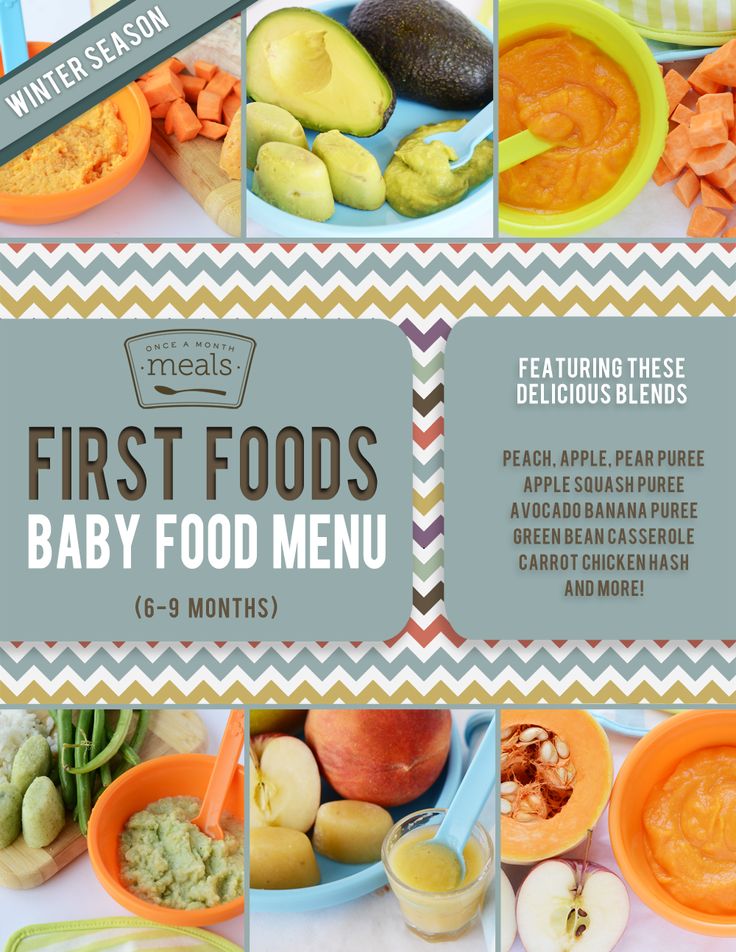 I had to add 1/2 cup of water to my oatmeal. You will want the oat cereal to be on the thinner side, so it doesn't become sticky. The oats will continue to absorb liquid as they cool, so you can add more water, fresh breast milk, or formula as needed. Serve to baby or freeze for later.
I had to add 1/2 cup of water to my oatmeal. You will want the oat cereal to be on the thinner side, so it doesn't become sticky. The oats will continue to absorb liquid as they cool, so you can add more water, fresh breast milk, or formula as needed. Serve to baby or freeze for later. Type of Oats: This recipe is for old-fashioned oats: for steel-cut or instant oats, read the full post.
Adding Spices: you can add a big pinch of cinnamon or pumpkin pie spice mix or a smaller pinch of nutmeg or cloves to these oats before blending.
Chia and Hemp Seeds: are added for a nutritional boost, but you can add or omit them if you prefer. You can get both of these at any health food store or online here (chia/hemp).
Avocado for Baby
Age: 4-6 months and up
Yield: roughly 15-25 ounces, depending on the recipe
Freezer Tray
Bumkins Baby Bowl
Blender
Saucepan
Did you make this recipe?
Tag @babyfoode on Instagram and hashtag it #babyfoode!
Pin Recipe Email a Friend
Mix by child's age: how to choose the right one?
Bulavina Ekaterina Borisovna
pediatrician of the 1st category
The classification of milk formulas by age is based on the changing needs of the child in the process of growth and development. How big is the difference between mixtures for newborns and grown-up babies, when to give this or that formula and how adaptation is connected with them, says pediatrician Ekaterina Borisovna Bulavina.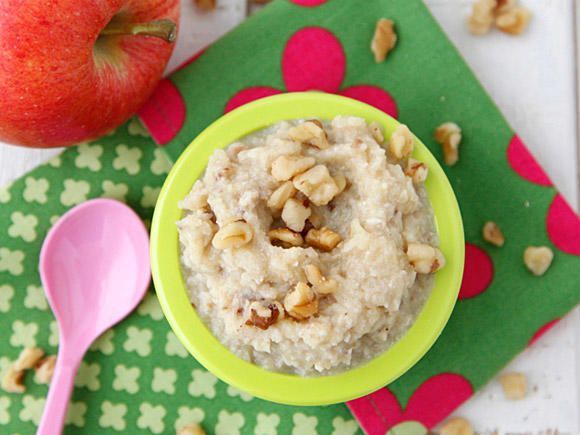 nine0003
nine0003
— Ekaterina Borisovna, why do manufacturers make different mixtures for children of different ages?
— The production of infant formulas is based on the properties of breast milk, the composition of which changes throughout the entire lactation period and largely depends on the energy needs of the child, the state of health of the mother, her psycho-emotional state, the usefulness of the diet and many other factors.
How breast milk changes as the baby ages
- Modern infant formulas are also developed based on the physiological needs of the child. It is extremely difficult to replace colostrum, but baby food manufacturers try to adapt the formula as much as possible to the needs of a child from 0 to 6 months, from 6 to 12 months, and also create preformulas for premature babies and follow-up formulas for children after a year.
— What is the difference between formulas for children of different ages and what is the formula for infant formula?
- Formula refers to the composition of infant formula that meets a certain standard.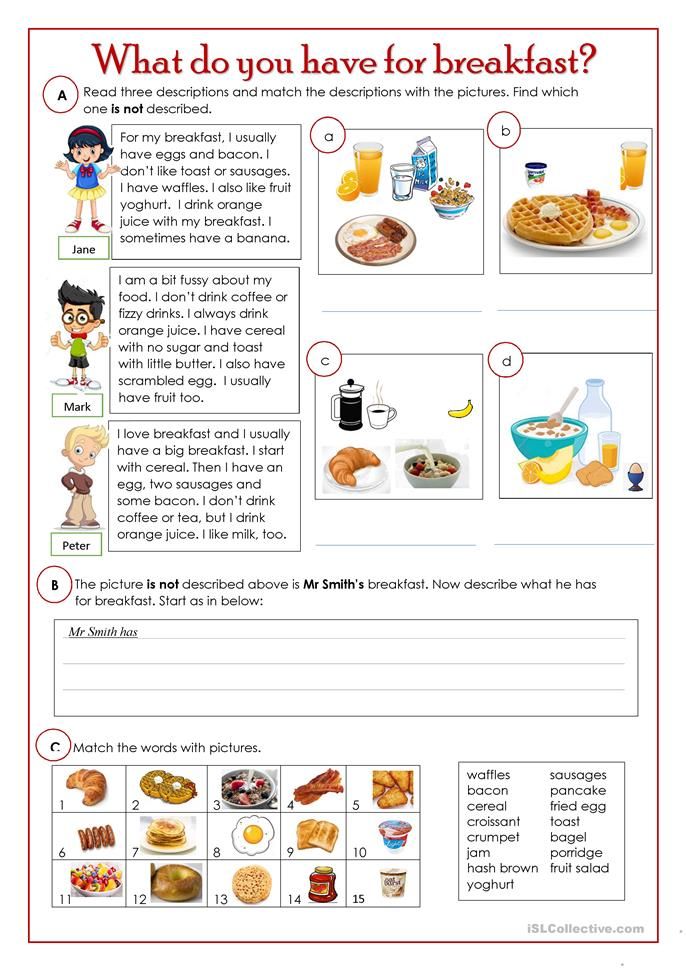 Each formula has its own number according to a specific age period. nine0003
Each formula has its own number according to a specific age period. nine0003
Milk formula classification by age
| Starter formulas, or formulas “1”, for the first half of the year, from 0 to 6 months | Infant formula from age 0 is adapted in composition to mature mother's milk, but, unfortunately, cannot replace valuable colostrum. Therefore, early attachment of the baby to the breast already in the delivery room and feeding with colostrum in the first days is very important. |
| Subsequent mixtures, or Formula 2, for the second half of the year, from 6 to 12 months | Differ in a lower protein content, but higher calorie content due to fat and carbohydrate components, contain more vitamins and minerals, which meets the needs of a growing child. |
| Follow-up formulas (baby milk) or Formula 3 - 1 to 3 years | Used as an additional source of protein, calcium, phosphorus, B vitamins, iron and other important trace elements, polyunsaturated fatty acids. nine0033 nine0033 |
| Preterm formulas or preformulas for extremely low birth weight babies | They are high in proteins, fats and carbohydrates, some trace elements such as iron, calcium, vitamin D, as well as high in calories and reduced in lactose. |
- This age classification of mixtures corresponds to the physiological needs of the child at different stages of development. And it is the same for all manufacturers, and already within each formula, variations are possible in accordance with the solution of a specific problem. For example, hypoallergenic, sour-milk, lactose-free, anti-reflux and other mixtures are produced. nine0003
- Is it possible to give the mixture out of age?
— It is very important to feed your baby with formula appropriate for his age. An improperly selected mixture can provoke the development of serious diseases in an infant.
- The composition of the first formula takes into account the physiological immaturity of the gastrointestinal tract of the newborn.
 The second formula is not suitable for him either in terms of calories or in terms of quality composition due to the high load on the gastrointestinal tract and kidneys.
The second formula is not suitable for him either in terms of calories or in terms of quality composition due to the high load on the gastrointestinal tract and kidneys. - Feeding the first formula to a child older than six months is also undesirable: the composition of the second formula is more suitable for this age. For example, the amount of protein has been increased for the harmonious growth of the baby. nine0074
Signs of disorders that may occur if formula is not given for age:
- abnormal - too little or too much - weight gain;
- psychomotor retardation;
- lethargy, apathy, disinterest in what is happening around;
- problems with the gastrointestinal tract - colic, regurgitation, pain, constipation or diarrhea, mucus impurities, streaks of blood in the stool.
- Ekaterina Borisovna, is it possible to transfer a child to a new formula on his own, without consulting a doctor?
— When switching to a new age-based formula for a healthy child, consultation with a specialist is not necessary. A baby who has digestive problems, low weight gain, signs of an allergy or other pathology should discuss changing the mixture with a pediatrician. You may need a different type of formula from a different manufacturer to address your baby's specific health concerns. For example, choose a hypoallergenic or hydrolyzed mixture for an allergic child. nine0003
A baby who has digestive problems, low weight gain, signs of an allergy or other pathology should discuss changing the mixture with a pediatrician. You may need a different type of formula from a different manufacturer to address your baby's specific health concerns. For example, choose a hypoallergenic or hydrolyzed mixture for an allergic child. nine0003
If the child tolerates the mixture of the initial formula well, then when switching to the second formula, it is better to choose a mixture from the same manufacturer. Changing the mixture within the same brand is easier to tolerate.
— How to switch to a new formula: abruptly or gradually?
- The transition to a new formula by age is carried out gradually for babies both on artificial and mixed feeding. To begin with, 10 ml of a new mixture is introduced into the first feeding and the condition of the baby is observed during the day. With a normal reaction of the body, gradually bring the volume of the mixture to the daily norm.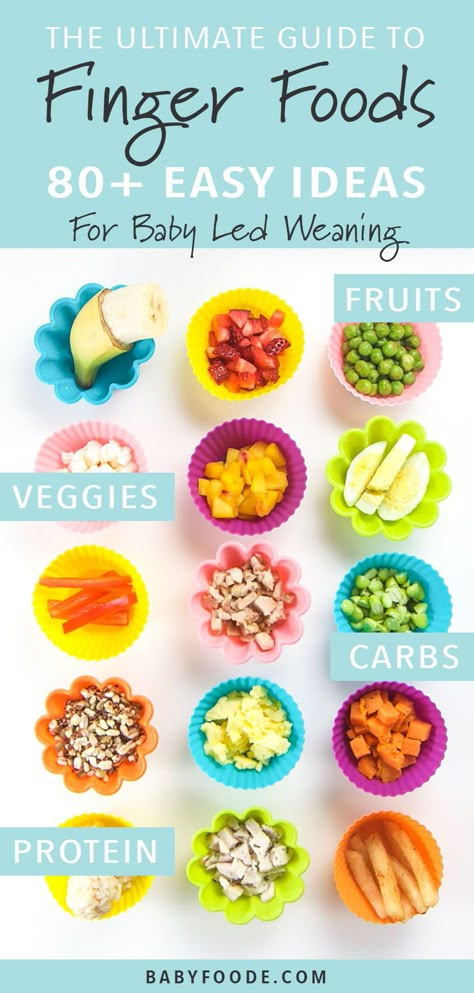 There are different schemes:
There are different schemes:
— What should parents do if their child refuses a new formula?
- Initially, you should make sure that the refusal of the mixture is not related to the health of the baby. Perhaps he is teething, he is ill, or his stomach is bothering him. Then the failure is quite understandable and the introduction of a new mixture can be postponed for some time.
If everything is in order with health, then you need to gently but persistently offer new food, observing the recommended intervals between feedings, so that the baby has time to get hungry. Not a single child has voluntarily starved himself to death. In the event of a categorical refusal of the baby, a pediatrician's consultation is necessary for the possible selection of another mixture. nine0003
- Let's talk about adapted infant formulas. What are their features and benefits?
— Adapted milk formulas are those whose composition differs minimally from the composition of human breast milk. They are prepared on the basis of cow and goat milk, but the final product differs significantly from the original raw material.
They are prepared on the basis of cow and goat milk, but the final product differs significantly from the original raw material.
Adapted milk formulas
Partially adapted milk formulas
- After a year, it is possible to add a partially adapted mixture to the child's diet, since the body is already ready to assimilate it. The main differences between the mixture for children older than a year are the presence of a larger amount of casein protein, sucrose, and less stringent requirements for the fat composition. Otherwise, it repeats the composition of mixtures up to a year and is also enriched with additional components, vitamins, minerals in accordance with the physiological needs of the child.
Non-adapted baby foods
— Feeding a child of the first year of life with non-adapted products in the form of whole cow or goat milk is unacceptable. Whole milk contains more protein and some minerals than breast milk, which puts an excessive burden on immature kidneys and provokes metabolic changes in the baby's body. There are colitis, constipation, diarrhea, regurgitation, the kidneys do not work properly and remove useful trace elements that are so necessary for the child. Whole milk proteins can cause allergic reactions. Also, cow's milk has too much calcium and phosphorus, which creates an additional burden on the excretory organs. But there is not enough iron in it. Children fed unadapted mixtures usually suffer from anemia. nine0003
There are colitis, constipation, diarrhea, regurgitation, the kidneys do not work properly and remove useful trace elements that are so necessary for the child. Whole milk proteins can cause allergic reactions. Also, cow's milk has too much calcium and phosphorus, which creates an additional burden on the excretory organs. But there is not enough iron in it. Children fed unadapted mixtures usually suffer from anemia. nine0003
In terms of nutritional value, goat's milk is close to cow's, but it has more polyunsaturated fatty acids and a higher content of medium-chain fatty acids, which are much more easily absorbed by the body. However, it lacks folic acid, which is compensated in the composition of adapted mixtures.
Read also
- about what to choose for baby food, whole milk or adapted formulas.
- How to choose the best infant formula? nine0010
— Before the introduction of infant formula, almost every mother tries to thoroughly study this issue so as not to harm her baby.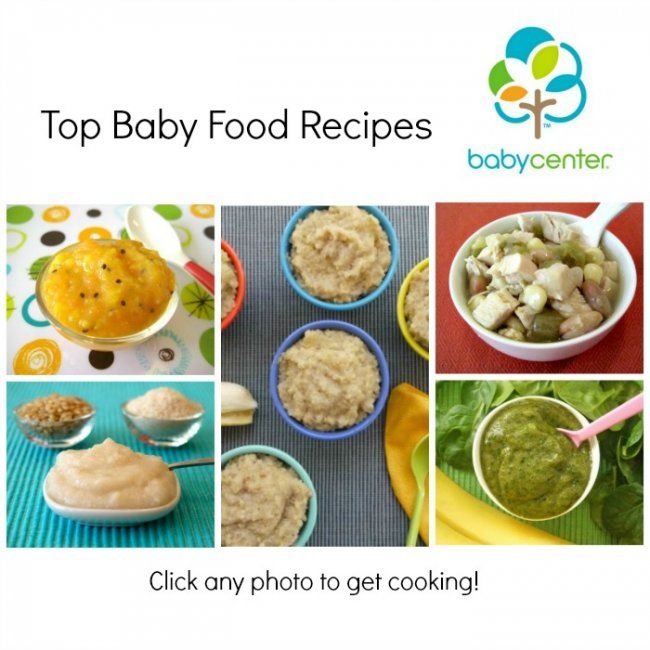 And, of course, the help of a doctor who knows the child from birth is invaluable here.
And, of course, the help of a doctor who knows the child from birth is invaluable here.
The choice is based on three main components
- Doctor's recommendations for the health and age of the child.
- Quantitative and qualitative composition of the mixture.
- Proper use of the mixture.
All manufacturers indicate on the packaging the numbers of the formulas "1", "2", "3" in accordance with the needs of the child, as well as the age and method of preparing the formula. In no case should you break the concentration and prepare a thicker mixture of the first formula for babies older than six months, or, conversely, it is unacceptable to buy a mixture marked "2" for a small newborn child so that he gains weight better. nine0003
Important characteristics of the adapted mixture
- Demineralized whey.
- Protein content - no more than 1.3-1.4 g / l for babies from birth and up to 1.8-2 g / l for children older than six months.
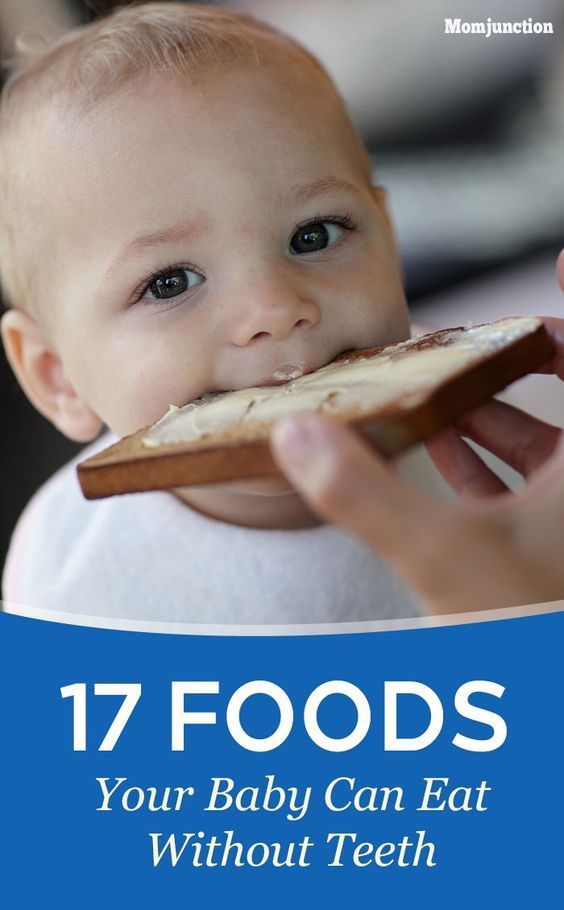
- The ratio of whey protein and casein is 60:40 in formulas for feeding in the first half of the year and 50:50 in formulas for feeding in the second half of the year.
- The presence of L-carnitine, nucleotides, pre- and probiotics is desirable. nine0077
- Lutein - necessary for the proper formation of the organs of vision. It has antioxidant activity and protects the retina from the harmful effects of ultraviolet rays.
- Oligosaccharides - these carbohydrates serve as a nutrient medium for the growth of beneficial microflora, contribute to comfortable digestion of the baby, and prevent constipation. nine0074
- Probiotics - bifidobacteria prevent the growth of opportunistic flora, have a positive effect on the formation of one's own microbiota and, as a result, contribute to comfortable digestion.
- Nucleotides, L-carnitine, taurine, vitamins and minerals according to age requirements.
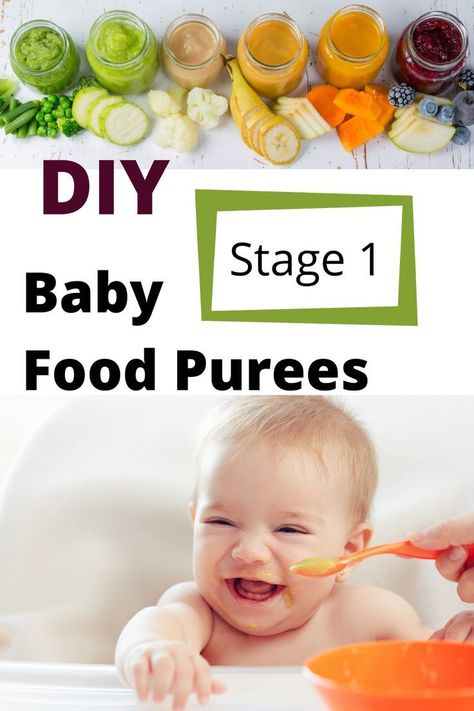
-
the mixture does not contain starch;
-
the mass fraction of moisture in a dry product should not exceed 3.5%;
-
the index of the solubility index of the raw sediment (for dry mixtures) should be no more than 0.2 cm³;
-
the level of active acidity is 6.6–7.4 pH. nine0003
-
the required level of product localization for awarding the Russian Quality Mark is at least 25%.
-
The prefix "pre" in the title refers to mixtures for premature or low birth weight babies.
-
"1" - for children from birth to 6 months.
-
"2" - for babies from 6 months to 1 year.

-
"3" - for children older than a year. nine0003
-
"4" - as a rule, starting from 18 months.
-
According to the requirements, the calcium content in the reconstituted mixture should be 330.0–700.0 mg/l, in fact it is 300.31 mg/l.
-
Magnesium should be 50.0-150.0 mg / l, and in fact - 6.75 mg / l.
— What is the difference between MAMAKO ® Premium milk formulas?
- The line of these mixtures is represented by three formulas that have an adapted composition according to the age needs of the child.
— It is worth noting that the fat component of goat mixtures plays an important role in the development of vision and the immune system. And it is very important to enrich the mixture of docosahexaenoic (DHA) and arachidonic (ARA) acids - their intake with food is very valuable for the baby's body. The content of such fatty acids in mixtures MAMAKO ® Premium of different formulas from "1" to "3" also decreases slightly, since from 4-6 months the child already receives complementary foods and other vegetable oils, which can serve as a source of polyunsaturated fatty acids.
The content of such fatty acids in mixtures MAMAKO ® Premium of different formulas from "1" to "3" also decreases slightly, since from 4-6 months the child already receives complementary foods and other vegetable oils, which can serve as a source of polyunsaturated fatty acids.
In addition, all formulas are additionally enriched with
Modern advances in science in the field of nutrition and pediatrics allow manufacturers of baby food to create products that are maximally adapted in composition to the composition of breast milk. One way to adapt is to divide mixtures into formulas in accordance with the physiological needs of the child of each age period. It is very important to follow the recommendations when feeding a child with a formula according to age. An inappropriate mixture can lead to the development of pathological conditions in an infant. For the harmonious growth and development of a child of the first year of life, it is necessary to feed with age-adapted, and therefore, in terms of macro- and microelement composition, milk mixtures. nine0003
* Breast milk is the best food for babies. WHO recommends exclusive breastfeeding for the first 6 months of a child's life and continued breastfeeding after complementary foods are introduced until the age of 2 years. Before introducing new products into the baby's diet, you should consult with a specialist. The material is for informational purposes and cannot replace the advice of a healthcare professional. For feeding children from birth. The product is certified.
The material is for informational purposes and cannot replace the advice of a healthcare professional. For feeding children from birth. The product is certified.
#baby formulas #Tips for Mom
How do I know if formula is right for my baby?
#Baby formulas #pregnancy
Shchelkunova Valeriya Maksimovna
neonatologist-resuscitator, specialist in children's medical massage, blogger, founder of the online school for moms Hellobaby_school
How to choose a feeding utensil
#Complementary food
Kizino Polina Alexandrovna
pediatrician, perinatal psychologist
In search of the best mixture - mom's mistakes
#Baby formula
Butuzova Olesya Vladimirovna
pediatrician
See all
View all nine0003
How do I know if formula is right for my baby?
# Infant formula # pregnancy
Shchelkunova Valeriya Maksimovna
neonatologist-resuscitator, specialist in children's medical massage, blogger, founder of the online school for moms Hellobaby_school
In search of the best mixture - mom's mistakes
# Infant formula
nine0002 Butuzova Olesya Vladimirovnapediatrician
See all
How to choose a feeding utensil
# Lure
Kizino Polina Alexandrovna
pediatrician, perinatal psychologist
See all
View all
View all
The best powdered milk formulas | Rating of Roskachestvo
About products
As part of a rolling study, dry adapted initial milk formulas (as close as possible in chemical composition to breast milk) produced on the basis of cow's and goat's milk, intended for healthy children from 0 to 6 months (18 products) and from 0 to 12 months ( 3 products).
The choice of brands was determined by mothers - the most active audience of the Roskachestvo portal. For a whole year, they sent the names of the brands they were interested in. As a result, experts tested the products of 21 brands in 82 quality and safety indicators. At the same time, the geography of the production of dry milk mixtures turned out to be quite extensive. We tested milk powders from Belarus (1), Germany (2), Denmark (3), Ireland (1), Spain (2), the Netherlands (4), New Zealand (1), Russia (4), Finland (1 ), Switzerland (1) and Estonia (1). The cost at the time of purchase ranged from 53.43 to 288.25 rubles per 100 grams of the product. nine0003
According to the results of the study, the powdered milk formula "Bellakt Optimum 1" (Republic of Belarus) met not only the requirements of current standards for quality and safety, but also the advanced requirements of the Roskachestvo standard. However, this product cannot qualify for the Russian Quality Mark, as it was produced abroad.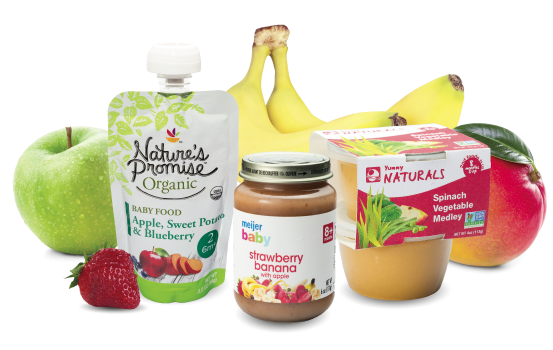
RUSSIAN QUALITY SYSTEM STANDARD
The standard of the Russian quality system for dry adapted milk formulas for children from 0 to 6 months has tightened the requirements for the content of some components: nine0003
Safety first
nine0002 According to Rosstat, today about 40% of children in the country are bottle-fed. The parents of these babies can easily purchase milk formulas, since there is no shortage of them on the shelves of Russian stores. The choice of the consumer is offered both imported and domestic products.
The parents of these babies can easily purchase milk formulas, since there is no shortage of them on the shelves of Russian stores. The choice of the consumer is offered both imported and domestic products. However, consumers have concerns about this product. For example, it is believed that milk mixtures may contain antibiotics (from raw materials), E. coli, heavy metals, preservatives and impurities that can harm the health of the child. nine0003
The experts checked the adapted dry milk formulas (breast milk substitutes) for microbiological safety, for the presence of preservatives and antibiotics.
The mixtures were also checked for the presence of melamine in them. After more than 6,000 babies were poisoned with infant formula in China in 2008 (in those mixtures, the melamine content was 500 times higher than the permissible norm), the very word “melamine” terrifies consumers.
The results of our study allow us to state that there is no melamine in the mixtures. nine0003
nine0003
FOR REFERENCE
How did the chemical get into baby food in 2008?
“According to the most common version, the reason for the Chinese melamine crisis was the deliberate addition of melamine to baby food and dairy products,” explains Dmitry Makarov, senior researcher at VGNKI, Rosselkhoznadzor. - This was done in order to increase the protein value of products. The fact is that the generally accepted method for determining protein does not distinguish between protein and melamine. Apparently, therefore, the manufacturers hoped that their scam would go unnoticed. However, they did not take into account the fact that in high concentrations, melamine causes the formation of crystals in the urinary tract, which leads to disruption of the kidneys. nine0003
Based on the results of testing mixtures for safety, it can be concluded that all products are safe. It does not contain antibiotics, heavy metals and toxic elements. Microbiological indicators meet the established requirements.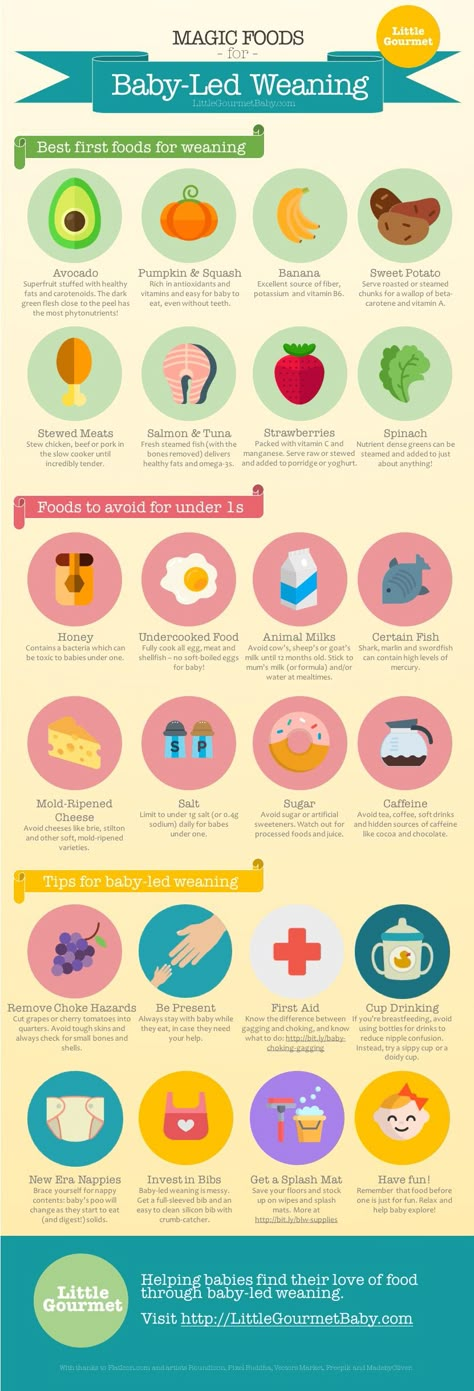 There are no preservatives (including sorbic, propionic and benzoic acids) in the composition.
There are no preservatives (including sorbic, propionic and benzoic acids) in the composition.
Special production
nine0002 Many people think that powdered milk mixtures are made from ordinary milk powder, to which various vitamins, micro- and macroelements are added. This, of course, is not true.First of all, it must be said that all mixtures are divided into adapted - as close as possible to women's milk, partially adapted and the so-called subsequent formulas - mixtures for feeding children older than a year. Also on the market is a category of adapted milk formulas with average indicators for feeding children from birth to 12 months. nine0003
Age distinctions of mixtures are as follows:
“The choice of optimal nutrition for children in the first months of life seems especially difficult, because the stomach of babies does not yet have the enzymes necessary for digesting food,” says Tatiana Butskaya -pediatrician. - These children often have functional digestive disorders, and they are at high risk of developing various forms of food intolerance. nine0003
That is why pediatricians insist on a mandatory consultation with a doctor before transferring a child of the first year of life to full or partial artificial nutrition.
The main principle that must be observed when creating adapted mixtures for children of the first year of life is their maximum approximation (adaptation) to the composition and properties of human milk and compliance with the characteristics of the child's digestion and metabolism. To achieve this, manufacturers are constantly improving blends. nine0003
To achieve this, manufacturers are constantly improving blends. nine0003
Read HERE about the benefits of breastfeeding and how it affects your baby's health.
What makes formula closer to breast milk?
For the health of the baby, it is important that the mixture is balanced in terms of the content of proteins, fats, carbohydrates, polyunsaturated fatty acids, amino acids, vitamins and minerals, which must be present in the composition of the mixture.
nine0002 Proteins, fats, carbohydratesIn the course of the study, the experts found that in mixtures of all brands, the content of proteins, fats and carbohydrates complies with the requirements of the law.
Vegetable fats and polyunsaturated fatty acids
– To improve lipid metabolism, milk fat is partially or completely replaced with vegetable oils (corn, rapeseed, soybean, coconut, sunflower, etc.)0009 Head of the Department of the Research Institute of Baby Nutrition of the branch of the Federal State Budgetary Institution "Federal Research Center for Nutrition and Biotechnology" Elena Simonenko.
In this regard, two more consumer fears are worth mentioning:
In our study, soy with GMOs was not found in mixtures.
In addition, experts have dispelled consumer fears about the inappropriateness of vegetable fats in baby food.
– The main essential fatty acid in human breast milk is palmitic. It is found in the fruits of the oil palm. Palm oil is about half made up of palmitic acid. Infant formulas are made as close as possible in composition to breast milk, and palm oil is an important ingredient. The requirements for the indicators of raw materials used in the production of infant formula are established in the technical regulation of the Customs Union "On food safety" (TR CU 021/2011), says Executive Director of the Association of Fat and Oil Producers and Consumers Ekaterina Nesterova.
– It should be emphasized that the level of palmitic acid in breast milk is 25%, and by refusing palm oil in the composition of infant formula, the manufacturer must ensure that its content is close to that of mother's milk.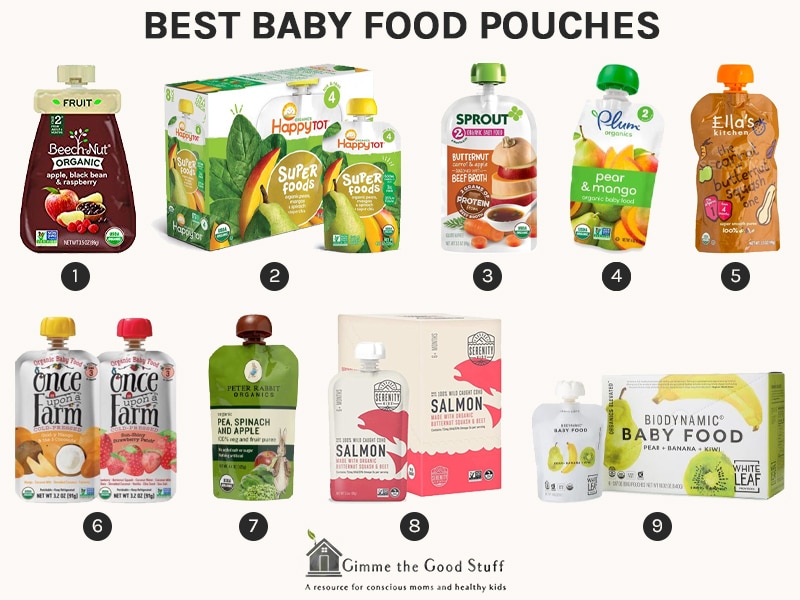 Meanwhile, in some milk "palm-free" mixtures, it is below 10%, - specifies Director General of the National Union of Milk Producers "Soyuzmoloko" Artem Belov. nine0010
Meanwhile, in some milk "palm-free" mixtures, it is below 10%, - specifies Director General of the National Union of Milk Producers "Soyuzmoloko" Artem Belov. nine0010
Also, the child in the process of growth and development requires energy. The body receives a significant part of it from the breakdown of fats.
- Polyunsaturated fatty acids are very important for the baby. These substances ensure the normal development of the organs of vision and hearing of the child, are responsible for the harmonious physical development and behavioral functions. Omega-6 and omega-3 fatty acids play a special role in the maturation and functioning of the central nervous system in children and have a direct impact on brain development. They are involved in the construction of the myelin sheaths of the brain and play a critical role in the transmission of signals between nerve cells. All this is extremely important for the development of intelligence, mindfulness, memory, psychomotor function, - clarifies Anastasia Kirillova, pediatrician at the Children's Clinic MEDSI (Moscow).
– It should be noted that polyunsaturated linoleic acid (omega-6 family) is not synthesized in the human body, it is one of the essential nutritional factors, including for young children, therefore it is used in infant formulas and is normalized by technical regulations, – specifies Elena Simonenko .
According to the requirements of TR TS 033/2013, in the dry milk mixture of linoleic acid should be from 14 to 20% of the total fatty acids. The study showed that in milk mixtures Nutrilon Premium (Ireland) and "MD mil SP Goat 1" (Spain) insufficient amount of linoleic acid, which does not meet the requirements of TR CU.
Amino acids
Particular attention should be paid to the presence of taurine in the composition of the mixture - an essential amino acid necessary for the proper development of the child's body, - notes Elena Simonenko .
Our research has shown that taurine content in products of all brands meets the established requirements. nine0003
nine0003
Vitamins and minerals
Any adapted milk formula, according to the recommendations of the FAO/WHO Codex Alimentarius Commission, must contain at least 11 minerals and 15 vitamins. We checked whether the content of vitamins and minerals meets the established standards.
According to the results of the study, it turned out that in the product Frisolac (Netherlands) the content of calcium and magnesium in the diluted mixture is below the established norms: nine0003
In the products of other brands, the experts did not find violations in terms of the content of minerals.
The level of vitamins in adapted mixtures should be higher than in human milk, on average by 15–20%, since their digestibility is lower than from breast milk. According to the requirements, in the reconstituted adapted mixture of vitamin C there should be at least 55-150 mg / l. nine0003
According to the requirements, in the reconstituted adapted mixture of vitamin C there should be at least 55-150 mg / l. nine0003
The audit showed that the products of nine brands of vitamin C are less than the established norm TR TS 033/2013: "Kid Istra" (Russia), Bebi Premium (Denmark), 0 Frisolac10 (Netherlands), Frisolac (Netherlands), Humana Expert (Germany), Nestogen (Russia), Nutricia Malyutka (Russia), Nutrilon Premium (Ireland), Similac (Denmark). However, this cannot be attributed to violations: due to the volatility of dry components, it is incorrect to say that this indicator was lower due to the fault of the manufacturer, the content of vitamin C could decrease during storage.
Read HERE for how to choose and store powdered milk formula.
Taste, color, smell and texture
Products of all brands fully met the organoleptic requirements.
Smell - pleasant, barely perceptible.
The taste of is delicate, slightly sweet, without foreign aftertastes.
Consistency. All mixtures were a fine homogeneous powder without lumps (or with a small amount of lumps that easily crumble with slight pressure). In the restored form, the liquid is homogeneous. nine0003
Color also met the requirements - from white with a slight creamy tint to a light creamy yellow.
We checked the level of active acidity (pH) in the mixtures and whether they dissolve well in water.
The results of the study showed that the products of all brands are highly soluble in water, and the level of acidity (pH) corresponds to the advanced standard of Roskachestvo. This means that all mixtures are well absorbed. nine0003
Compliance with marking
And finally, one more concern: many are convinced that the ingredients of powdered milk mixtures declared on the label may not correspond to the actual composition. Our experts have checked whether such concerns are justified.
Our experts have checked whether such concerns are justified.
“According to the requirement of the TR CU for product labeling, the manufacturer is obliged to place information on the composition of micronutrients (they determine the development of the child), as well as the amount of proteins, fats and carbohydrates in the volume in which they are present in the dry milk formula, on the package,” says Elena Saratseva, Deputy Head of the Russian Quality System . – At the same time, it is important for consumers to obtain information about the composition of the mixture in the finished (reconstituted) form in accordance with the recommendations indicated by the manufacturer. It is important to note that the rationing for infant formula is based on the diluted product. Therefore, labeling on mixtures is often put through a fraction or in two columns in the table: on the dry matter contained in this package, as well as on the finished (diluted) product. nine0003
During the study, it was found that there are certain discrepancies in the indication of prebiotics, minerals and vitamins in the labeling.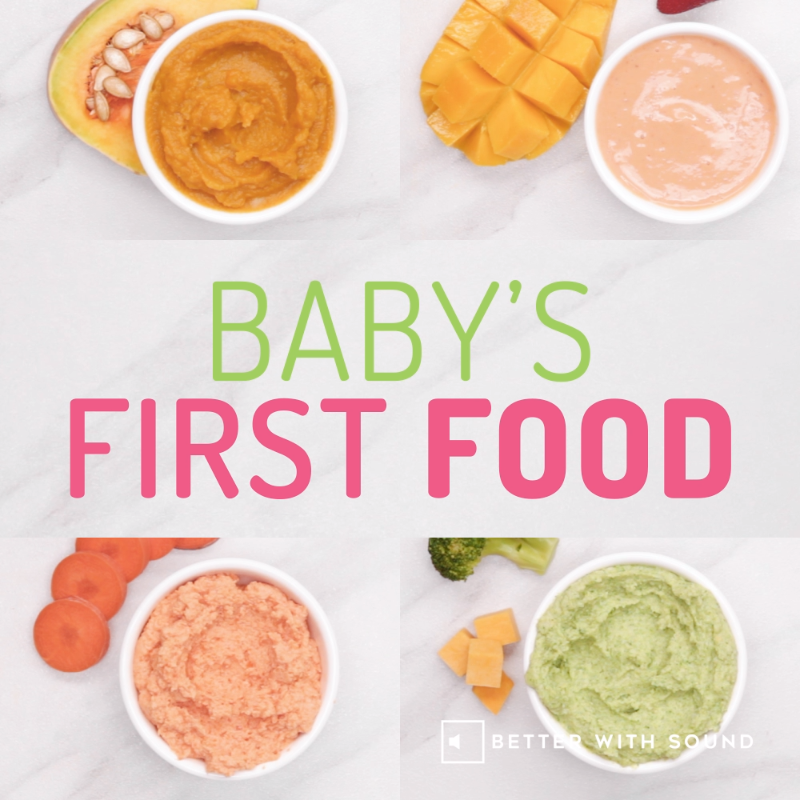
Only one manufacturer indicated absolutely reliable information in the labeling of his product - in the mixture "Bellakt Optimum 1" (Belarus).
“The problem of inconsistencies in labeling may be related to the dry mixing method in production,” says Elena Saratseva. nine0010 - This method of manufacture does not allow achieving uniformity of the composition. Thus, in almost every package, the actual concentrations of trace elements differ from those declared. This creates an inconvenience when choosing baby food, since, for example, mixtures where a high content of calcium or vitamin C is declared may not turn out to be such, therefore, they will not meet the expectations that the consumer places on it.
At the same time, despite deviations from the information stated in the labeling, the products of most brands will provide a healthy child with the necessary amount of all substances, the content of which is normalized in milk mixtures.




